
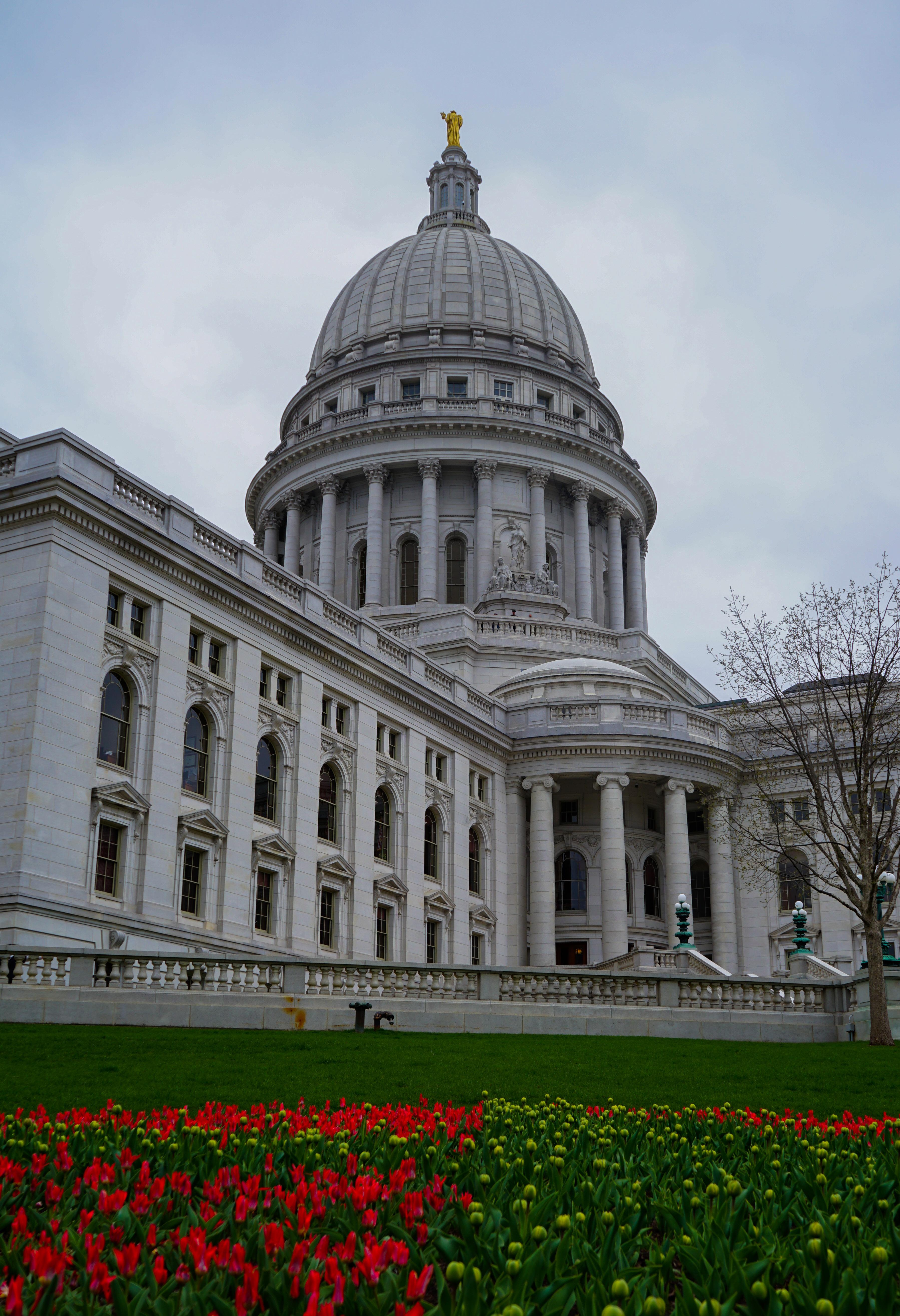
“…the great state University of Wisconsin should ever encourage that continual and fearless sifting and winnowing by which alone the truth can be found.” University of Wisconsin-Madison Since 1892 dailycardinal.com Thursday, April 27, 2023 l SPRING FAREWELL ISSUE 2023 Terrace summer sneak peek 5 Jalisco modernizes homestyle Mexican 13 LAUREN AGUiLA/THE DAILY CARDINAL
Goldhaber • Maddie Gamburg • Natalie Koepp
• Jack Ecke
Social Media Manager Clare McManamon
Business and Advertising
business@dailycardinal.com
Business Manager
Asher Anderson • Brandon Sanger
Advertising Managers Noal Basil • Sam Mayo Marketing Director Mason Waas
The Daily Cardinal is a nonproft organization run by its staff members and elected editors. It receives no funds from the university. Operating revenue is generated from advertising and subscription sales.
The Daily Cardinal is published weekdays and distributed at the University of WisconsinMadison and its surrounding community with a circulation of 10,000.
Capital Newspapers,

Learning through doing: The essence of student journalism
By Sophia Vento and Jessica Sonkin EDITOR-IN-CHIEF AND MANAGING EDITOR
Learning through doing is learning that sticks. And upon entering 2142 Vilas Hall, that’s the first thing you’ll discover.
The Daily Cardinal is one of over 1,500 student newspapers across the country where wideeyed student journalists — some with high school newspaper experience and others with absolutely none — are pitched stories and told to do one thing: get out there and report.
Whether it’s an assignment to cover a student government election or a water main break, you are hitting the ground running as a new staffer at the Cardinal. For many, these stories are the first foray into the intricacies of a new topic, or even an entire new city and state. For every writer, though, their first byline in a campus publication is their first time using their voice to tell the stories of fellow campus community members.
These are the stories we, as student journalists, need to tell.
The rise of amateur digital media is a vehicle for
deliberative discourse. Social media platforms can serve as a forum for individuals to speak freely, expressing their ideas and gaining exposure to opposing viewpoints. But in an increasingly polarized world riddled with echo chambers and a lack of empathy for combatant perspectives, harmonious free speech and deliberation aren’t always the guaranteed outcome.
Opinion-based writing generates attention. It reels in clicks by way of persuasion or exposure to a new school of thought. It energizes readers, be they for or against the author’s stance.
But, there’s an integral spot in this world for straight news. The search for balanced and factual coverage is a long and arduous one; no one’s nature is devoid of prejudice, so how can anyone — or thing, given the relevance of artificial intelligence — produce perfectly neutral coverage? We can’t, but we can certainly try.
College students, specifically undergraduates, are like clay. Many are eager teenagers or
young adults, and many have yet to form concrete ideologies. They’re free and courageous. If good for nothing else, the stereotypical Big Ten, four-year college experience provides young members of society with independence — the chance to refine their thinking and learn more about themselves than they knew before.
Any of their previously rooted perspectives are subject to change at this stage of life. Not only does this motivate curiosity, but it inspires a fresh outlook on the principles and practices of journalistic writing and reporting.
Student news outlets have exclusive access to the stories that impact their peers and other community members most. What’s more, coverage on the ground of college campuses can predict statewide and national trends — election outcomes, fiscal policy, social justice initiatives and so much more.
Time spent on a student newspaper may be just a blip in a college career that results in time spent as a social worker, elementary school
teacher or an electrical engineer. Some staffers may go on to become Pulitzer Prize winning journalists or media moguls who launch a revolutionary news platform.
And that’s the essence of student journalism.
Campus publications are funneling in sta ers at a time when they are learning and growing — their views, their passions and their interests are changing. Ultimately, student newsrooms are at the core of universities’ commitment to exploring broad and diverse ideas, and promoting conversation, critical thinking and intellectual growth.
At the Cardinal, not all staers are forever committed to journalism. They are, however, committed to their community at the time of their enrollment. Each generation contains a group of believers in the impact of a simple story.
Collegiate newsrooms, the Cardinal o ce included, serve as a space for members of that group to learn, not fail. It’s the chance to try something new and be part of an impactful legacy while doing it.
news stories the Cardinal is watching this summer, fall
By Hope Karnopp NEWS MANAGER
As the spring semester winds down, so too does our daily news publishing schedule.
Our news team will continue to follow stories over the summer and periodically publish breaking news and features.
There are a few major storylines we will be monitoring throughout summer and into the fall. Here’s where five stand right now:
Will the University of Wisconsin-Madison obtain its new engineering building?
University leaders want to construct a new, 340,000-squarefoot engineering building to accommodate surging interest in the program.
Gov. Tony Evers included $347.3 million for the project in his twoyear budget, though a state commission deadlocked on it in March.
The engineering building’s fate will be determined later this spring and summer as Republicans on the powerful Joint Finance Committee work to draft their own budget proposal.
The push for this building isn’t new. The late Chancellor Rebecca Blank and former UW System President Tommy Thompson advocated for it over two years ago.
Evers’ proposal also includes establishing a new home for the Art Department as part of the plan to demolish the infamous Mosse Humanities Building.
Shrinking off-campus housing options
While new apartment complexes are going up, including on the
corner of State and Gorham Streets, so are rent prices in Madison.
UW-Madison has acknowledged they over-admitted last year’s freshman class and struggled to find space for everyone in dorms.
Those students are now entering an already squeezed o -campus apartment market. The student body continues to impact o -campus housing availability, even if the university is looking to rein in admissions this cycle.
The city of Madison, UW-Madison and UniverCity Alliance are conducting a study to provide more data for this trend, the Wisconsin State Journal reported, and we’ll be looking for those results this fall.

Mnookin’s second year Chancellor Jennifer Mnookin described her first year as one of “listening and learning.” As she begins her second year at the university, we’ll be watching what campus issues she decides to focus on.
Many of the issues we asked Mnookin about during our roundtable student media interview in November still remain relevant.
They include bolstering UW-Madison’s research standing, increasing demand for student mental health resources and increased scrutiny from Republican state lawmakers on free speech issues.
From her investiture, we can gather some of Mnookin’s goals: growing faculty, amplifying research and building deeper partnerships with industries and communities in the state.
The power of the student vote UW-Madison and other UW
System campuses drew national attention after youth voters and campus organizers propelled liberals’ state Supreme Court victory in April.
While we won’t see another major election for a while — Sen. Tammy Baldwin and the presidential contest will be on the ballot in 2024 — don’t expect student voters to fall out of the spotlight.
Wisconsin’s Republican Party Chair visited GOP Badgers earlier this month, highlighting the importance of students’ role in statewide races.
The Washington Post reported a Republican legal strategist told donors in April that conservatives should limit voting on
college campuses. She criticized locating polling places “next to the student dorm so [students] just have to roll out of bed, vote and go back to bed.”
Increased union energy
A few weeks ago, the Starbucks on State Street became the latest store to file for unionization. Many of the location’s 50+ workers are part-time student employees.
The latest union e ort is part of a growing trend in Madison and nationwide. Nurses at UW Health hope one of three routes will help them secure union status.
We’ll continue to follow union e orts surrounding campus, as well as students’ ongoing campaigns for higher wages.
2 Thursday, April 27, 2023 news Corrections or clarifcations? Call The Daily Cardinal offce at 608-262-8000 or send an email to edit@dailycardinal.com. For the record l An independent student newspaper, serving the University of Wisconsin-Madison community since 1892 Volume 132, Issue 29 2142 Vilas Communication Hall 821 University Avenue Madison, Wis., 53706-1497 (608) 262-8000 News and Editorial edit@dailycardinal.com News Team News Manager Hope Karnopp Campus Editor Madeleine Afonso College Editor Anthony Trombi City Editor Francesca Pica State Editor Tyler Katzenberger Associate News Editor Ellie Bourdo Features Editor Annabella Rosciglione Opinion Editors Priyanka Vasavan • Graham Brown Arts Editors Noah Fellinger • Kai Wen Li Sports Editors Donnie Slusher • Cole Wozniak The Beet Editor Mackenzie Moore Special Pages Editor Zoe Bendoff Photo Editor Lauren Aguila • Meghan Spirito Graphics Editors Zoe Kukla • Henry Moore Science Editor Julia Wiessing Life & Style Editor Sophie Walk Podcast Director Elena Price Copy Chiefs Kodie Engst • Ella Gorodetzky Copy Editors Jasper Bernstein • Noe
Inc. is the Cardinal’s printer. The Daily Cardinal is printed on recycled paper. The Cardinal is a member of the Associated Collegiate Press and the Wisconsin Newspaper Association. All copy, photographs and graphics appearing in The Daily Cardinal are the sole property of the Cardinal and may not be reproduced without written permission of the editor in chief. The Daily Cardinal accepts advertising representing a wide range of views. This acceptance does not imply agreement with the views expressed. The Cardinal reserves the right to reject advertisements judged offensive based on imagery, wording or both. Complaints: News and editorial complaints should be presented to the editor in chief. Business and advertising complaints should be presented to the business manager. Letters Policy: Letters must be word processed and must include contact information. No anonymous letters will be printed. All letters to the editor will be printed at the discretion of The Daily Cardinal. Letters may be sent to opinion@ dailycardinal.com. © , The Daily Cardinal Media Corporation ISSN -5 98 Editorial Board Graham Brown • Em-J Krigsman • Anupras Mohapatra • Jessica Sonkin • Priyanka Vasavan • Sophia Vento • Ethan Wollins Board of Directors Scott Girard, President • Herman Baumann • Ishita Chakraborty • Don Miner • Nancy Sandy • Phil Hands • Josh Klemons • Barbara Arnold • Jennifer Sereno • Max Lenz Editor-in-Chief Sophia Vento Managing Editor Jessica Sonkin dailycardinal.com
UW-Madison
UW-Madison’s new environmental engineering major sparks interest
By Beth Shoop STAFF WRITER
The University of Wisconsin-Madison introduced environmental engineering last year as a new major. Prior to this, the subject was solely a branch of the civil engineering major.
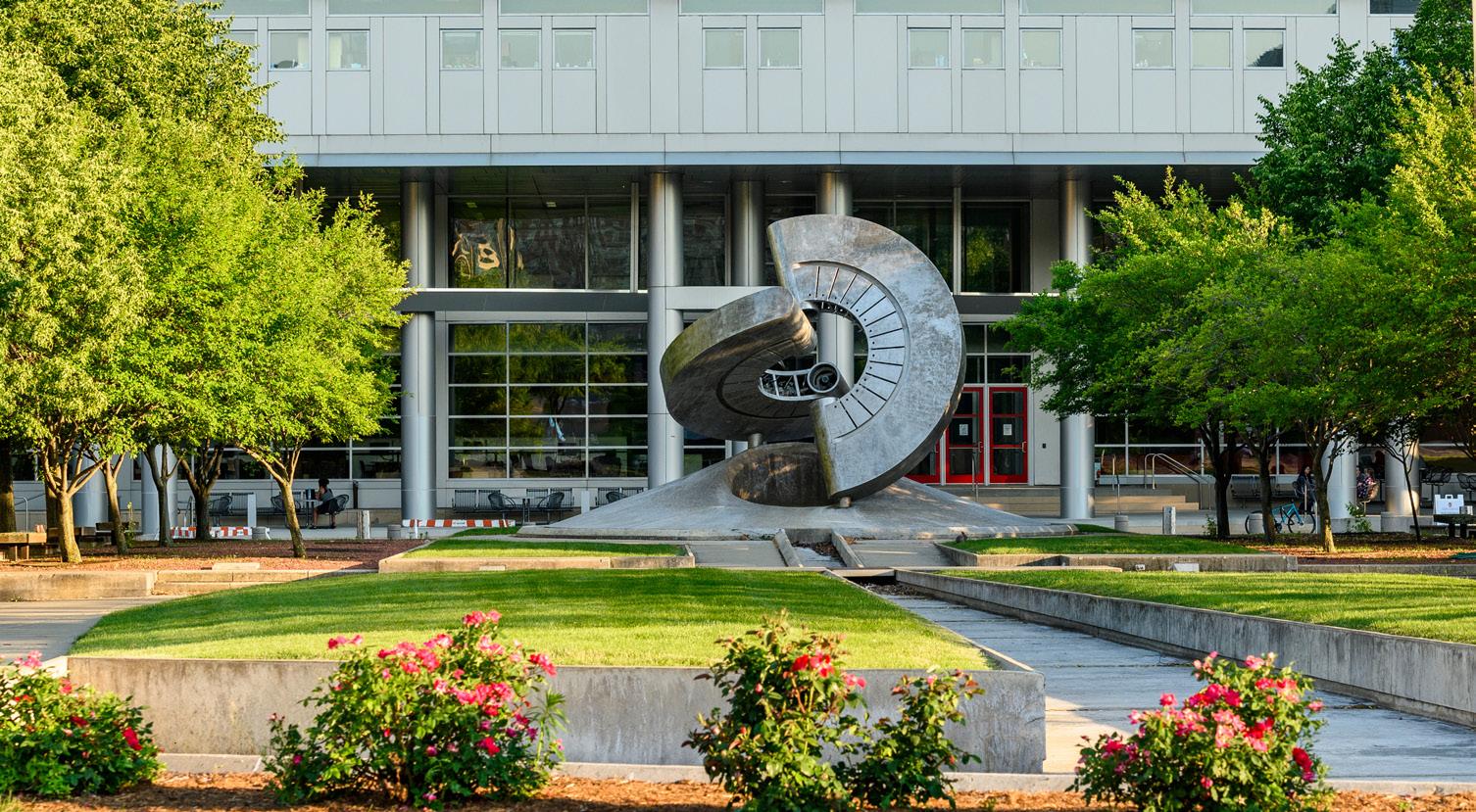
Environmental Engineering Degree Program Director Greg Harrington explained that the purpose behind the split had a great deal to do with enrollment purposes, following in the footsteps of other Big Ten universities and listening to the requests of engineering students on campus.
Harrington led the push to turn environmental engineering into its own degree program with the help of other engineering constituents.
“There were five people working diligently for the two years that it took to put the final proposal together, but I’ve probably [been] working on it for six years,” Harrington said. “Within our department, we have 17 faculty members that we call environmental engineers and then there are a few others in other departments. It’s probably a group of about 25 of us that were really supporting this and making it go.”
The implementation of the new major has come with two additional classes, but has otherwise left the curriculum fairly similar to what it was when housed in the civil engineering program. One new major requirement is a “materials” class. UW-Madison is one of the only universities that o ers and requires this type of course Harrington explained.
Motivation behind the creation of the course stems from events such as the water crisis in Flint, Michigan, Harrington
explained. If the pipes had not been created using lead, the crisis would not have occurred
“The basic, fundamental understanding of materials, and how strong they are and what they can leach into water or those sorts of things, we think is vitally important,” said Harrington.
Before the establishment of the major, there was an organization on campus that allowed students to explore the field of environmental engineering. The Environmental Engineering Club was founded in 2016 as a way for students to learn more about di erent career paths, research and experts’ experiences in the field through guest speakers, explained Environmental Engineering Club Vice President Melina Dennis.
Dennis explained that she is adding to her focus by attempting to make the club both socially based and educational.
“We have been shifting toward being a place for people to find community,” Dennis said. “Especially since it’s a new major, we’re having a lot more people come through, not really knowing where they fit in, wanting to meet more people who are interested in the same thing as them.”
Dennis expressed how she and the current president have worked to grow the club from a few consistent members attending meetings to 15 to 30 attendees. She explained how the organization is still attempting to recover from low membership numbers due to the COVID-19 pandemic.
“When I joined last semester, other than the board, there were only about two or three consistent people going to meetings,” Dennis said. “In our first two meetings of this semester, we had about 30 people.”
Harrington, who works as the advisor for the organization, cited the development of the environmental engineering major as a reason for the increase in club membership and meeting attendance numbers.
“One thing we’ve learned so far is that the new degree program has created increasing numbers in membership for the club,” Harrington said.
Although it’s only her second semester in the club, Dennis decided to take on a leadership role when most became vacant.
“Most of last semester’s board quit except one senior,” said Dennis. “The first half of the semester, it was just me and one senior as vice president and as president. Just the two of us doing all this work.”
However, the two leaders’ work paid o as they have been filling board members’ spots and increasing meeting attendance.
“We currently have eight board members now, so we were able to pick up six people,” Dennis said. “I think we’re doing a lot better and we’re still growing.”
Both Dennis and Harrington emphasized the importance of understanding what environmental engineering is as well as the vast number of places the major’s implications can be found throughout the world.
“Just about anything from a water protection standpoint that you see in the news is something that environmental engineers touch. We’re also engaged heavily in alternative energy and reduction of energy use, so energy and climate change,” Harrington said. “Those sorts of things are all in the news, and if you’re in our field, you have an opportunity to participate in those things.”
Dane County becomes first in Wisconsin to achieve 100% renewable energy
By Marin Rosen STAFF WRITER
Dane County became the first county in Wisconsin — and the fourth in the nation — to receive 100% of its energy from renewable sources after the completion of the Yahara Solar Project last week.
Dane County partnered with Alliant Energy and SunVest Solar to install 33,000 solar panels at a 90-acre solar farm site in the town of Cottage Grove. Kathryn Kuntz, the director of the Dane County O ce of Energy & Climate Change, told The Daily Cardinal the project allowed the county to achieve its goal sooner than expected.
“Dane County has a long tradition of environmental stewardship. A key priority has been to lead by example — to green our own operations before we encourage others to do the same,” Kuntz told the Daily Cardinal. “The County Executive set a goal that the county’s electricity would be 100% renewable o set by 2025 and now we have achieved that goal in 2023, two years ahead of the goal.”
Prior to the Yahara Solar Project, only 40% of the county’s electricity was renewable, according to Kuntz.
“Overall, we will have gone from about 40,000 ETCO2 Scope 1 and 2 emissions — that is, the emissions from the fuels we burn directly, like natural gas for buildings or diesel fuel for vehicles as well as electricity and steam usage — to about 15,000 Metric Tons of CO2 equivalents, which is a drop of more than 60%,” Kuntz said.
According to Kuntz, Dane County leased the land for the solar project to
Alliant Energy, who contracted with SunVest Solar, to build the solar array. Alliant pays the county in renewable energy credits, allowing the county to reach its renewable energy goals for the next few decades without any increase in energy costs.

“New clean energy projects cost less than existing coal and natural gas facilities, so now is the time to explore clean energy options,” Kuntz said.
Professor Gregory Nemet, a University of Wisconsin-Madison researcher who focuses on the process of technological change in energy and its interactions with public policy, said recent advancement in renewable energy technology has made these energy transitions more feasible politically and financially.
“The falling cost of solar — nearly 90% in the past decade — has moved solar from interesting but expensive clean energy technology to the least costly way to produce power,” Nemet told The Daily Cardinal. “Consequently, there are now emerging coalitions supporting the move to solar.”
Despite the rising number of coalitions supporting solar power, Nemet said there are other roadblocks preventing the rest of the country from following Dane County’s example.
“Now that solar technology has become inexpensive and federal policy has become strongly supportive, the biggest issue holding us back from taking full advantage of solar and wind is to facilitate the permitting process so that projects can be completed swiftly,” Nemet said.
While political roadblocks surround
renewable energy implementation, Dane County continues to make plans to further its clean energy initiative. In 2022, Dane County Executive Joe Parisi set another goal for county operations.
“He plans that we achieve carbon neutrality across our facilities, fleet and land operations by 2030,” Kuntz said. “Now that our electricity is 100% renewable o set, we are focused on reducing the remaining emissions from our buildings and fleet while also increasing natural carbon sequestration.”
Dane County’s climate action plan aims to reduce greenhouse gas emissions by 50% by 2030 and become carbon-neutral county-wide by 2050. Parisi previously told The Daily Cardinal that addressing climate change is one of the county’s top priorities.
“Climate change is an existential issue, and nothing else we’re talking about matters if all of a sudden the plan-
et no longer exists,” Parisi said. “We can do a lot on the local level, not only with our direct emissions, but in inspiring others to action.”
Nemet also said there is an urgency to address climate change, and governments must find ways to swiftly transition to cleaner energy sources.
“Because addressing climate change is a motivator, it also needs to be done swiftly because with climate change moving slowly, [it] is not much di erent than doing nothing,” Nemet said.
Kuntz said she and the entire Dane County O ce of Energy & Climate Change hope other counties in Wisconsin will strive to achieve the same.
“Achieving this goal is part of our e orts to reduce countywide emissions,” Kuntz said. “Now that our electricity is 100% renewable o set, it is easier for us to encourage others to pursue a similar path.”
news dailycardinal.com Thursday, April 27, 2023 l 3
COURTESY OF JASONSYANEZ VIA FLICKR
COURTESY OF UW-MADISON VIA BRYCE RICHTER
Labor Spring 2023 provides hotbed for labor organizing
By Jasper Bernstein STAFF WRITER
Labor Spring 2023 brought together workers, including student workers, from Madison and Milwaukee on Saturday to share their experiences organizing in their workplaces. The event took place at The Crossing Campus Ministry and served as a hotbed for di erent labor e orts, with discussions on motivations for labor organizing as well as the fight for fair compensation and better working conditions.
The event — part of a collaborative e ort led by the Kalmanovitz Initiative for Labor and the Working Poor — brought together a panel of labor organizers and workers from across the state. They aimed to highlight the current labor campaigns and the importance of this moment in labor history. In addition to the panel, the event included a training led by organizers on the fundamentals of unionizing.
“They invited us out because we give this [unionizing] training a lot,” said panelist Robert Christl. “Because of our connection with workers who’ve been organizing, I think that the organizers of this event wanted to hear from immigrant workers who are on the front lines of the struggle, making sure
that those voices are heard.”
Christl, who serves as program director at Worker Justice Wisconsin, provided the training at the event.
“Worker Justice Wisconsin has a worker center on Park Street, and we dedicate ourselves to three things: educating workers about their rights, helping them get organized and ultimately unionize if they want,” he said. “We help incubate worker owned cooperatives, and all of our organizers speak Spanish fluently.”
During the event, members of the University Labor Council (ULC) passed out fliers promoting their workers’ audit at the University of Wisconsin-Madison.
“The University Labor Council is a coalition of most of the unions on campus. We’ve worked with basically all campus unions,” said Harry Richardson, a member of the ULC. “We’re doing this outreach e ort, the workers’ audit, to try to get workers on campus to talk about what’s good about their job as an organizing tool to help get workers on campus thinking together and working together.”
According to the ULC, their workers’ audit has three main objectives: creating a safe environment for UW-Madison work-
ers to express their experiences, connecting with workers on an individual level to gather more information while identifying common themes related to workplace issues across campus.
UW-Madison employs over 21,000 people, and the ULC hopes to “build a better university for everyone.”
“We’ve been together as a coalition for several years, trying to organize people on campus,” Richardson said. “[The ULC has] worked with blue collar, technical workers, TAs, all different campus workers.”
According to Richardson, the ULC has achieved some of its goals, such as a “base pay increase to $17 an hour for the blue collar workers on campus.”
During the event, student workers Omonefe Osifo and Olivia Ligman participated in the panel. Osifo, a student worker at Gordon Dining and Event Center, discussed the dining hall’s “really bad history in terms of workers.”

“It’s not the best environment to work in, and it would be really nice to see some change,” Osifo said. “We’ve gone from being fully sta ed at the beginning of the school year to being very understa ed right now.”
Osifo explained she recently lost the ability to get a meal after work.
“Having constraints and all these rules regarding access to food that we’re going to be throwing away at the end of the day, It’s been hard, especially with someone like me who’s struggling with food insecurity,” said Osifo. “Work is where I get food most of the time.”
The event gave hope to Osifo’s goal for “a better work environment.”
“As someone who’s part of the working class, you feel so small, and your bosses and the people who are in power put you so low that you don’t feel like you have the opportunity to move forward,” Osifo explained. “Being able to hear that there are actual real peo-
ple today who are making change really kind of inspired me.”
The aura of labor organizing could be felt through the retractable walls of the event as panelists voiced enthusiasm for unionization.
“Colleges run on student labor. I think that students as workers get taken advantage of, and that they have tremendous power to build a more just higher ed system,” said Christl. “Get organized. There’s a ton of organizations that exist to help. Reach out to Worker Justice [Wisconsin], reach out to the University of Labor Council, reach out to the South Central Federation of Labor, there are labor movements here to help anyone get organized.”
LGBTQ+ mental health remains grim in Wisconsin
 By Sydney Steidl STAFF WRITER
By Sydney Steidl STAFF WRITER
LGBTQ+ youth are disproportionately impacted by mental health challenges in Wisconsin, according to the Wisconsin Office of Children’s Mental Health’s (OCMH) latest annual report.
The report highlights youth mental health challenges from school and family environments, as well as the impact cultural identity and economic barriers may add to their lived experiences.
These issues are particularly prevalent among LGBTQ+ youth. Nearly half of Wisconsin’s LGBTQ+ youth have “seriously considered” suicide, a rate 2.5 times higher than youth as a whole, according to the report.
With a 10% increase over the
past ten years, 34% of Wisconsin students reported they feel “sad or hopeless every day.”
Wisconsin’s LGBTQ+ youth face growing legal barriers to inclusion. State lawmakers have introduced bills that would prevent teachers from acknowledging a student’s desired pronouns in class and require youth to participate in sports teams that align with their sex assigned at birth, according to Rep. Lee Snodgrass (D-Appleton).
“One of the things that’s most frustrating is that Republicans like to talk big game about caring about youth mental health when they’re consistently introducing bills that further marginalize and traumatize some of the most at-risk youth in Wisconsin,” Snodgrass said in an interview. “That includes the
LGBTQ+ community.”
According to Snodgrass, the Wisconsin LGBTQ+ caucus is creating legislation to alleviate these obstacles. Last session, they introduced their Equality Agenda, a bill package intended to make life safer, more accepting and overall easier for LGBTQ+ individuals. The caucus plans to reintroduce similar bills during Pride Month in June, Snodgrass said.
One issue the Equality Agenda addresses is conversion therapy, the widely discredited practice of attempting to change a person’s gender or sexual orientation. Due to the traumatizing nature of the practice against LGBTQ+ youth, 20 states have chosen to ban it outright.
The practice of conversion therapy continues to be legal in
Wisconsin, if state funds are not used in cases involving minors.
“I introduced a bill to ban conversion therapy from a legislative perspective that didn’t even get a hearing,” Snodgrass said.
Outside of legislative progress, the OCMH report emphasized the importance of family and community connections to combat mental health issues. For LGBTQ+ youth, having one accepting adult in their lives can make them 40% less likely to attempt suicide, the report noted.
Still, few teenagers are willing to talk to their parents about issues regarding their mental health. Less than a quarter of students who reported feeling angry, anxious, empty, sad or hopeless said they would talk to an adult family member about these feelings, according to the report.
Access to mental health professionals is an important source of support for youth beyond their families. Currently, there is one community-based mental health professional for every 440 kids in Wisconsin. The recommended ratio is 250:1.
Ava Pelligrino, a student at Mukwonago High School, works as the Young Adult Lived Experience Partner at the OCMH. At the OCMH briefing in January, she said the increased demand for mental health services occurred because of the COVID-19 pandemic.
“My generation is said to have been the ‘now’ generation,” Pelligrino said. “We want things now. We don’t want to
wait a month or two to see a therapist or to get medications from a prescriber.”
While these figures are increasing due to pandemic funds, 49% of youth diagnosed with mental conditions still have not received treatment.
Gov. Tony Evers sought to combat the issue of youth mental health through this support in his 2023-25 budget proposal. He recommended an allocation of more than $270 million in general purpose revenue for various mental health initiatives in K-12 schools — an expansion of the current $22 million in annual school mental health funding, according to the proposal.
Evers declared 2023 “The Year of Mental Health” during his State of the State address in January.
“The state of mental health in Wisconsin is a quiet, burgeoning crisis that I believe will have catastrophic consequences for generations if we don’t treat it with the urgency it requires,” Evers said during his speech.
Snodgrass agrees, and she hopes lawmakers will pay special attention to the unique mental health concerns LGBTQ+ youth face.
“It can feel really lonely to be a member of the LGBTQ+ community in Wisconsin, especially when we look at what’s happening nationwide,” said Snodgrass. “I think it’s really important to remind them that they have six representatives in the Senate and the Assembly in Wisconsin. We’re here and we’ve got their backs.”
news
DRAKE WHITE-BERGEY/THE DAILY CARDINAL
LAUREN AGUILA/THE DAILY CARDINAL
4 Thursday, April 27, 2023 dailycardinal.com l
More than 90 years of the Terrace: Events, music, more this summer
By Annabella Rosciglione FEATURES EDITOR
The University of WisconsinMadison community got a sneak peak into the wonders of the Memorial Union Terrace season last week, when the sunburst chairs returned the same week Madison was bathed in high-temperatures and sunshine.
“We saw the Terrace be very full during our first week of terrace season. We were lucky enough to have beautiful weather that first week,” Shauna Breneman, Wisconsin Union communications director, said. “We were so grateful to all the patrons who returned it to our space.”
With over 800,000 visitors per summer, the Terrace houses over 2,000 of the iconic sunburst chairs this year. The chairs have been through multiple renditions throughout the years, but the current design appeared around the 1960s.
“According to our sta ’s memories and the history of which we’re aware, that’s the most chairs the Terrace has ever had,” Breneman said.
With the warm weather comes summer concerts on the Terrace,
hosting a variety of live music every Wednesday through Sunday during the summer season.
Some bands have been playing the Terrace for decades, while others are just stopping in town for the night.
“A lot of [the bands] are what we call ‘legacy bands,’ bands that have always played the terrace or have been playing it for 10 plus years,” Wisconsin Union Music Director Jesse Frolik said. “We have them on a big long list somewhere in a dusty cabinet that we just pull out every season and book them for shows because they’re awesome and bring a lot of people out to the Terrace.”
A Madison favorite is returning to the Terrace this summer for the first time since 2019: Natty Nation, Madison’s premier reggae band.
Pat McCurdy, UW alum who had a one-man band as a student and never stopped, has been playing the Terrace for over 30 years.
“Other people or bands just reach out to us throughout the year and they express interest in playing on the Terrace or playing in that kind of venue,” Frolik said.
Sean Micheal Dargan, Wisconsin Union program advisor,
noted he was grateful the program was able to book indie rock band Deer Hoof on their tour between Chicago and Minneapolis. Scary Vore, a band hailing from Scotland, will be returning for their second year in Madison.
After finding incredible success last year, there will be three “Lakefront Live” nights on Lake Mendota this summer, Dargan said. On the first Thursday of each month of summer, bands will play facing the lake rather than the Terrace.
Hoofers will be hosting free water equipment to rent so patrons can enjoy the show in the water. Kayaks, stand-up paddle boards and even floaties will be available.
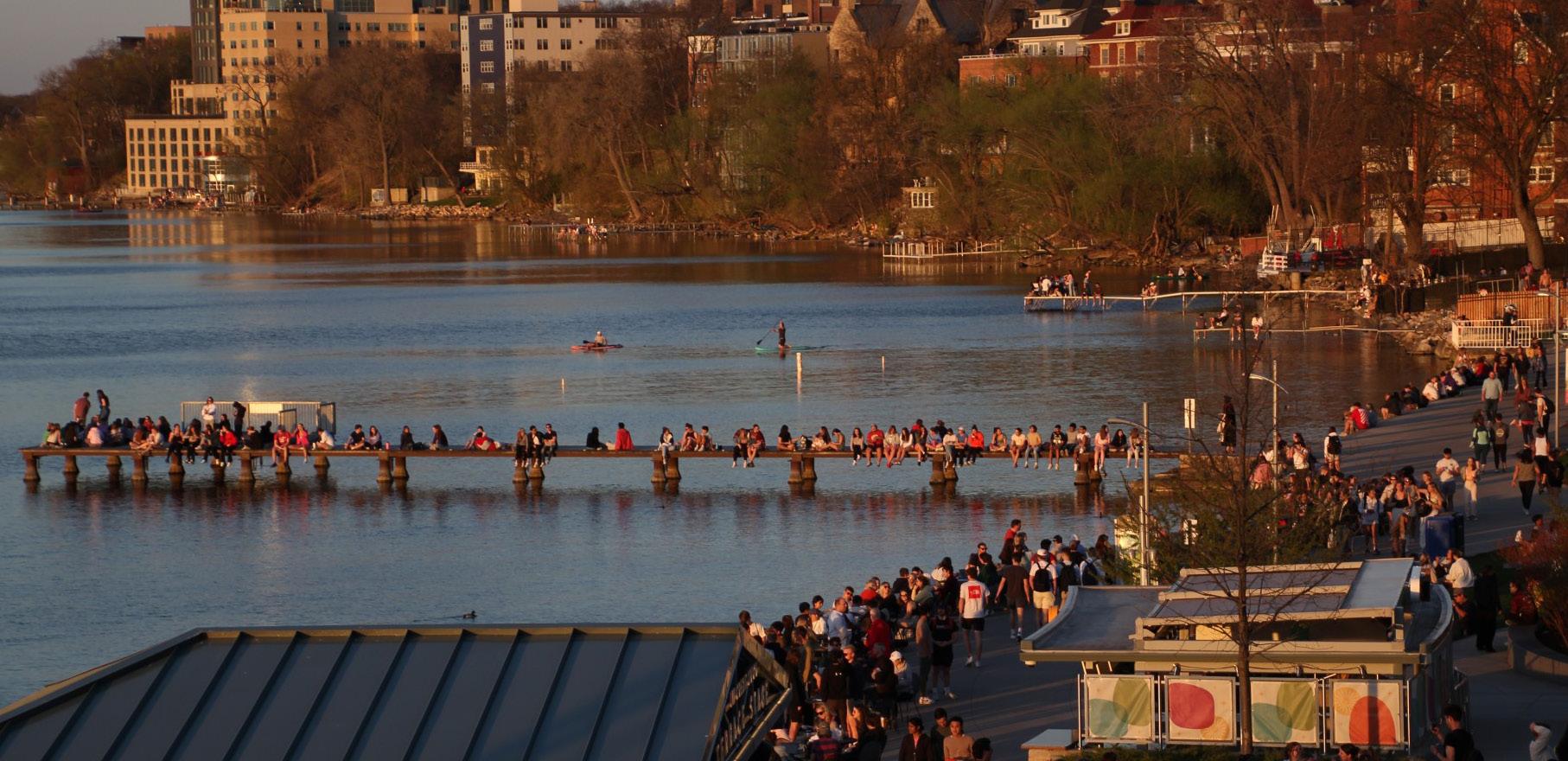
There are also movies at the Terrace every Sunday night. However, the schedule is yet to be set.
“That’s always a really fun blend of di erent genres, whether you’re interested in something animated or an action movie,” Madeleine Carr, Wisconsin Union communications coordinator, said.
New food is also coming to Memorial Union. A shareable pretzel with various sides will now be avail-
able at Lakeview Lounge. The outdoor barbeque stand will unveil barbeque nachos for the first time, too.
“Over at the Daily Scoop, returning for the first time since 2019, is ‘The Freshman 15,’” Breneman said. “It’s 15 scoops of ice cream with five toppings of folks’ choice with whipped cream and a cherry.”
Students can get involved with event planning by applying to various Wisconsin Union Directorate positions. There are 11 committees and six outdoor clubs involved with planning the Terrace season that students can get involved with.
“Students plan the majority of
our more than 1,000 events throughout the year, including Terrace season events,” Breneman said.
Whether community members come for the music, beer, weather, arts or food, days and nights spent at the Terrace have been enjoyed since 1929. The Terrace has almost a century of history contributing to Madison history, including its vibrant art and music scene.
“We’re grateful to have had so many years to celebrate how wonderful Madison is and to celebrate with our patrons and with visitors from all over the world,” Breneman said.
JFC Republicans leave Wisconsin’s largest-ever conservation project short $4 million
By Gavin Escott STAFF WRITER
The future of the largest conservation project in Wisconsin history is in limbo after Republicans on the Joint Finance Committee (JFC) rejected a $4 million state funding proposal for the Pelican River State Forest.

Voting 12-4 on party lines last Tuesday, the committee objected to using the funds from Wisconsin’s Knowles-Nelson Stewardship program to purchase conservation easements on roughly 56,000 acres near Rhinelander in northwestern Wisconsin. The funds would have matched a $10.8 million federal grant to close a $15.5 million deal that would protect areas around the Pelican River for public recreation and logging.
The Wisconsin Natural Resources Board (DNR) previously approved state funding in November, but an anonymous objection from a lawmaker in January — later identified as Sen. Mary Felzkowski (R-Irma) — halted the project.
Despite state law requiring the JFC to set a meeting date to discuss the project, no meeting was set.
With barely 24 hours’ notice on Tuesday, the JFC co-chairs called a meeting to review five projects that had been held up by anonymous objections, including the Pelican River Forest conservation.
In a meeting that included no public testimony, the Republican-controlled committee deployed a pocket veto to kill all five projects, marking the JFC’s latest use of the pocket veto to kill a project without holding a meeting.
Lawmakers on the JFC have increasingly employed anonymous objections and pocket vetoes to stymie proposals from Democratic Gov. Tony Evers, with land conservations in the Northwoods especially targeted, according to Wisconsin Watch. A legal memo obtained by Wisconsin Watch revealed legislative attorneys were skeptical of the legality of withholding funding for months without a meeting.
Republicans want locals ‘100% on-board’
Republicans on the JFC voting against the Pelican River Forest last week objected on the grounds that local communities weren’t properly consulted.
According to Wisconsin Public Radio, local governments like the towns of Monico and Sugar Camp as well as Langlade County expressed reservations about the project last fall, with the town of Monico wanting to preserve some of the land along U.S. Highways 8 and 45 for residential and commercial development.
Felzkowski, whose district contains the Pelican River Forest, was concerned the project would reduce tax revenues for the local governments near the forest.
“We have areas that are going broke, and we continue to take the tools away from them to allow them to be economically viable,” Felzkowski said last Tuesday. “Enough is enough.”
Felzkowski said Republicans would introduce legislation to ensure stewardship proposals don’t move forward until a ected areas are “100% on-board,” according to WPR.
Democrats criticized the GOP’s use of anonymous objections, with Evers blasting Republicans for using a “secret process” to block projects, saying his administration was considering next steps.
‘Once-in-a-lifetime’ conservation opportunity
Described as a “once-in-alifetime opportunity,” the Pelican River Forest Project protects nearly 70,000 acres of working forestland in northern Wisconsin, including 68 miles of streams from the Wolf and Wisconsin rivers. Proponents said the project would protect the qual-
ity of the rivers and safeguard drinking water for over 40,000 people downstream.
Additionally, the project permanently secures public access to more than 70 miles of recreational roads, with maintenance funded by a private endowment, according to advocates. The roads, which have been closed in recent years, provide access throughout the forest for fishing, hunting and sightseeing.
According to the Conservation Fund, a national nonprofit organization dedicated to environmental preservation and economic development that bought the Pelican River Forest in 2021, the area plays a crucial role in Wisconsin’s timber industry and the fight against climate change. The forest stores enough carbon dioxide to o set emissions from 4.1 million passenger vehicles over the course of a year and filters 60 billion gallons of precipitation per year, the fund said.
Clint Miller, central Midwest regional director for the Conservation Fund, said the group was disappointed by the JFC’s actions but would continue working to finish the project.
“The Pelican River Forest project is a historic opportunity to advance the public benefits of
retaining forests for the critical forest products industry and provide new opportunities for recreation,” Miller told WXPR last week. “We are grateful for the overwhelming local public support and will continue working with the Department of Natural Resources to complete this important project.”
The Department of Natural Resources now has to come up with other funds recouping the federal grant to keep the project alive. The DNR previously told WPR it might need to seek a landowner donation or launch a fundraising campaign if stewardship funds came up short.
If the project is not approved by the end of the fiscal year, the $11 million in federal Forest Legacy grant funding — which covers more than two-thirds of the Pelican River Forest project cost — will be unavailable, according to DNR Deputy Secretary Steven Little.
Joe Hovel, the Director of Partners in Forestry, a group that pushes for sustainable forestry in northern Wisconsin, previously told The Daily Cardinal that the lifeblood of the Northwood economy was forestry and tourism.
Hovel worried that lifeblood could run dry without support for the Pelican River Forest.
“If this opposition succeeds in opposing and killing this project, that federal money, it’s going to go for forestry and it’s going to go to help tourism and, unfortunately, it’s going to be in a di erent state,” Hovel warned. “It’s not going to be in Wisconsin.”
news dailycardinal.com Thursday, April 27, 2023 l 5
The Terrace is popular for grabbing a drink and watching sunsets.
DRAKE WHITE -BERGEY/THE DAILY CARDINAL
COURTESY OF RICHARD N. HORNE VIA WIKIMEDIA COMMONS
In Wisconsin, bipartisan expungement reform struggles to find the finish line
By Tyler Katzenberger STATE NEWS EDITOR
Rep. David Steffen (R-Green Bay) appeared in front of a Senate committee last week to present a bipartisan bill that would reshape Wisconsin’s process for expunging criminal charges.
From Ste en’s perspective, it’s common sense reform. He estimates his bill could add up to 10,000 people to a shrinking Wisconsin workforce in need of new hires. It would also allow those convicted of low-level, non-violent crimes to break free of the state’s abnormally strict expungement laws, which bar people over 25 years old from clearing their criminal record.
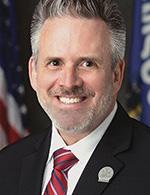
Most of his colleagues and nearly two dozen interest groups agree. Not a single group is registered in opposition to Ste en’s bill, and prior versions of his expungement reform plan passed the Assembly with overwhelming majorities two separate times since 2019.
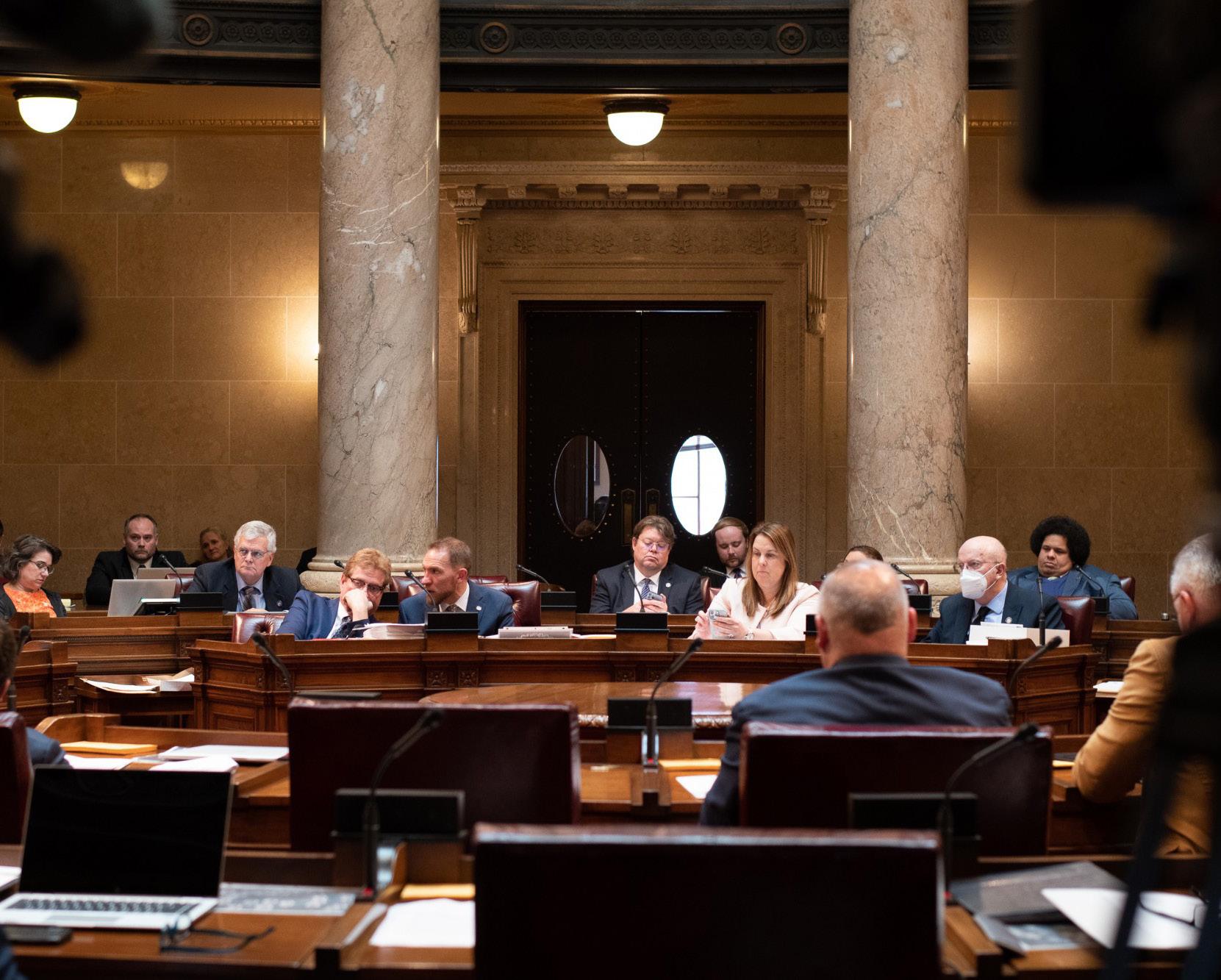
Yet, each time, his bill died in the Senate. Why?
According to Steffen, Republicans require bills to have support from 17 Republicans before hitting the Senate floor — more than the amount needed to pass a bill with bipartisan support.
what’s being asked of them, and they can’t,” Oleson said. “We can do better.”
Wisconsin expungement laws a national outlier
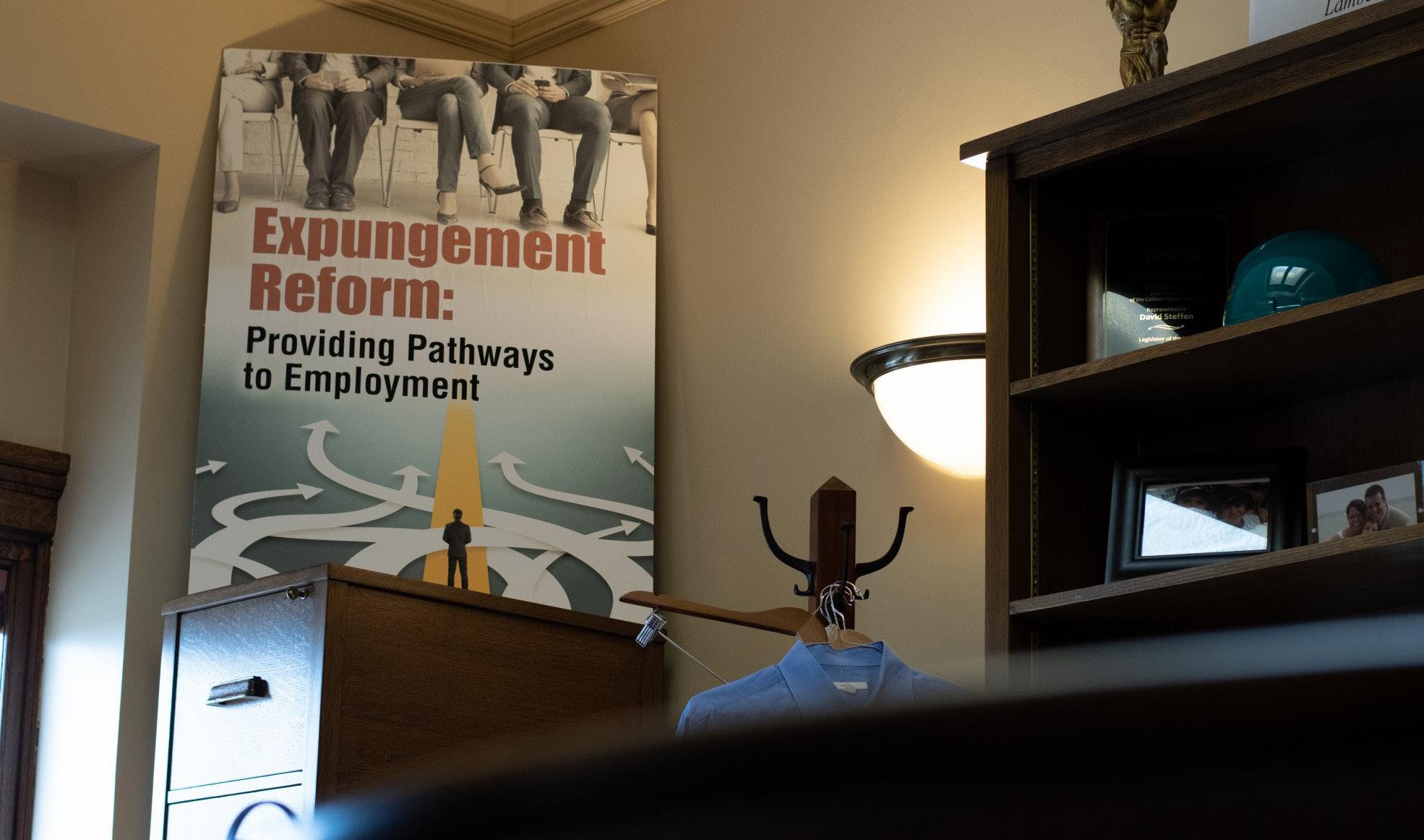
Wisconsin is the only state in the nation where past and closed cases are not eligible for expungement, according to the Wisconsin Policy Forum. Under
prison on early release in 2017, she was excited to jump back into a life of “working and thriving.” Although she eventually found a job at EXPO, Oleson said her criminal record haunted every job she applied for, despite Wisconsin’s strong employment non-discrimination laws.
“I was unemployable,” Oleson said. “It was devastating.”
Legislators seek expanded job opportunities
Joblessness is the single most important predictor of recidivism, according to the American Civil Liberties Union. Yet, a 2018 report from the Prison Policy Institute (PPI) found the unemployment rate for formerly incarcerated Americans is 27%, higher than peak unemployment during the Great Depression.
people I know that didn’t know to ask [for expungement],” Goyke said. “I reflect on instances where I didn’t ask, and I could have.”
It’s why Ste en introduced the legislation in 2017. Limiting employment opportunities for people who are “square with the house” and removed from the criminal justice system doesn’t make sense, he said, especially when employment reduces recidivism.
“If we as a party, a government [and] a society are truly committed to getting people to work, especially when they want to work, this is a no-cost option to make that possible,”
Ste en told the Cardinal.
Can it pass?
floor. During Tuesday’s hearing, Sen. Andre Jacque (R-Green Bay) suggested the proposed one-year waiting period for expungement eligibility was too short compared to neighboring states, among other concerns.
A longtime detractor of Ste en’s proposal, Jacque said his support for this bill would depend on how authors move forward.
“This is a bill that’s essentially in the same form as a bill the authors have rejected potential amendments to in the past,” Jacque told the Cardinal. “If that changes, I’m open to supporting the bill.”
Additionally, Jacque worried Steffen’s bill could overwhelm Wisconsin’s courts with expungement requests, a concern backed by findings from the Wisconsin Policy Forum. However, the agency’s 2018 report said potential caseloads may vary depending on how lawmakers introduce expungement reform.
Jacque said his office is working on its own expungement reform bill but did not share specifics.
Despite continued opposition from members of his own party, Steffen is “more optimistic than ever” the bill will pass this session after years of refinement and compromise.
With longtime expungement reform supporter Rep. Dan Knodl (R-Germantown) set to join the Senate after winning an 8th District special election in April, Steffen believes he could have enough votes to beat the “numbers game” that’s halted previous iterations of his bill.
To Ste en, the process is a “frustrating but understandable” part of politics that maintains party cohesion.
To Sen. Kelda Roys, one of numerous Democrats behind Ste en’s bill, it’s a “profoundly anti-democratic” display of the outsized power Republicans hold in a state that’s voted for Democrats in five of the last seven major statewide races.

“This is a no-brainer,” Roys told The Daily Cardinal. “Wisconsin is by far the worst state in terms of expungement, and we have the opportunity to make our state better.”
But to Marianne Oleson, an executive assistant to the directors for EX-incarcerated People Organizing (EXPO), the stalemate is yet another barrier for formerly incarcerated individuals struggling to rejoin society despite serving a full sentence.
“We see it every day — good people who are just trying to get their lives back on track and do
current state law, individuals must apply for expungement at the time of their sentencing.
It’s also one of just a handful of states that limits expungement eligibility to young o enders, with Wisconsin’s age cap set at 25 years old.
That means in Wisconsin, anyone over the age of 25 who commits a misdemeanor or lowlevel non-violent felony — such as theft or drug possession — must carry those charges on their criminal record forever, even if their charges are acquitted or dismissed.
Oleson is one of those people.
Convicted in 2012 with seven counts of low-level, non-violent felonies for misleading statements and omissions of stocks and securities, she was sentenced to seven years in prison and 21 years of extended supervision after release.
When Oleson — a mother of three who said she was a business owner of 15 years — left
Formerly incarcerated individuals like Oleson want to work. Previously incarcerated people between ages 25 and 44 are either employed or actively looking for work at higher rates than the general population, according to the PPI.
What’s more, those who have their charges expunged see a 25% increase in income after two years, according to a Michigan Law School study from 2019.
Prospects are less fortunate for previously incarcerated Wisconsinites over 25, who can’t get their charges expunged.
“We can finish a mortgage, we can finish an education. We can even finish a marriage if we want to,” Oleson testified at last week’s Senate hearing. “But we can’t finish a criminal conviction. It follows us and hangs over us.”
Both Democrats and Republicans say Wisconsin’s current expungement law is confusing and outdated. Rep. Evan Goyke (D-Milwaukee), a former public defender and ardent supporter of expungement reform, testified last Tuesday that even he couldn’t grasp the law’s full reach.
“I cannot tell you how many
Over the past eight years, Ste en worked first with retired Sen. Alberta Darling and now with Sen. Rachael Cabrera (R-Appleton) to counter concerns that the expungement reform bill is giving a “special pass to some folks” or reinforcing crime in Milwaukee, which he said is a growing concern among Republican lawmakers.
“I am constantly surprised by the number of curveballs that are being thrown at this bill,” Ste en said.
As in past years, Ste en’s bill faces a rocky road to the Senate
Olseon said Steffen’s bill could do more to expedite expungement for the 1.4 million Wisconsinites with a criminal record. She suggested a program similar to Michigan’s “Clean Slate” law, where people with qualifying charges have their records expunged automatically after a set amount of years.
But for her, it’s still a step in the right direction for a state she said struggles to rectify “punitive beliefs” toward criminal justice.
“People do deserve second chances, and we are all more than our worst choice,” Oleson said.
6 Thursday, April 27, 2023 dailycardinal.com news l MK DENTON/THE DAILY CARDINAL
COURTESY OF WISCONSIN STATE LEGISLATURE
Headshot of Rep. David Steffen, a Republican lawmaker from Green Bay.
MK DENTON/THE DAILY CARDINAL
COURTESY OF MARIANNE OLESON Marianne Oleson, EXPO executive assistant.
UW-Madison Engineering Expo ‘sparks curiosity’ in younger students
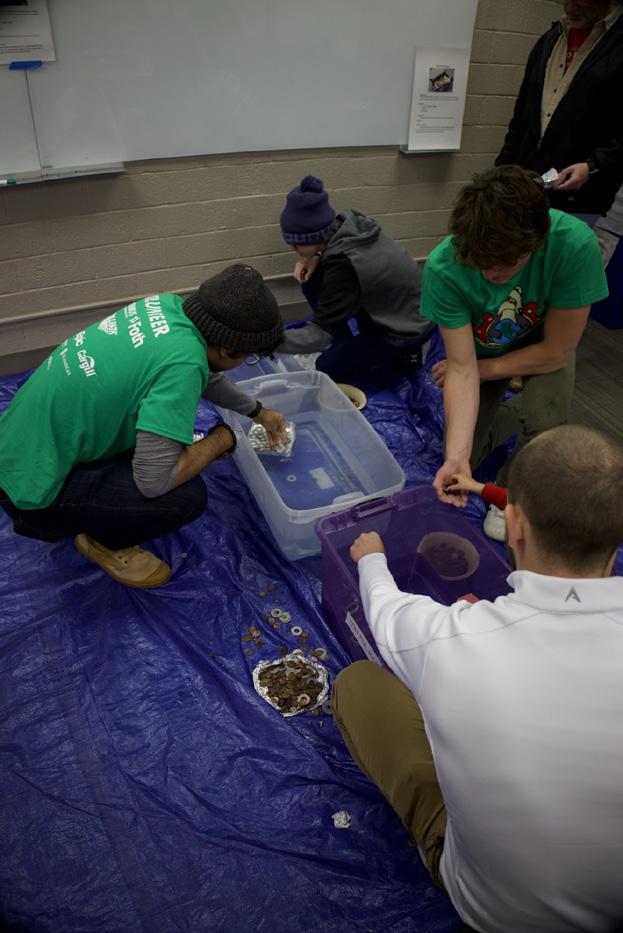
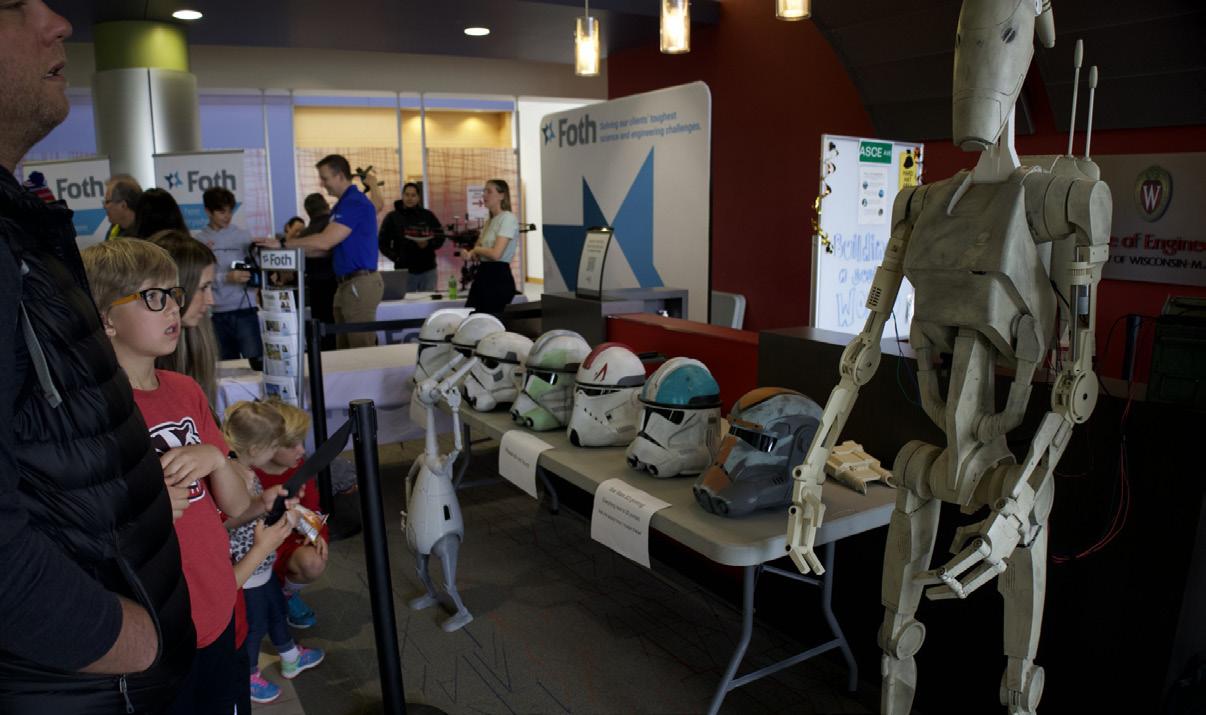

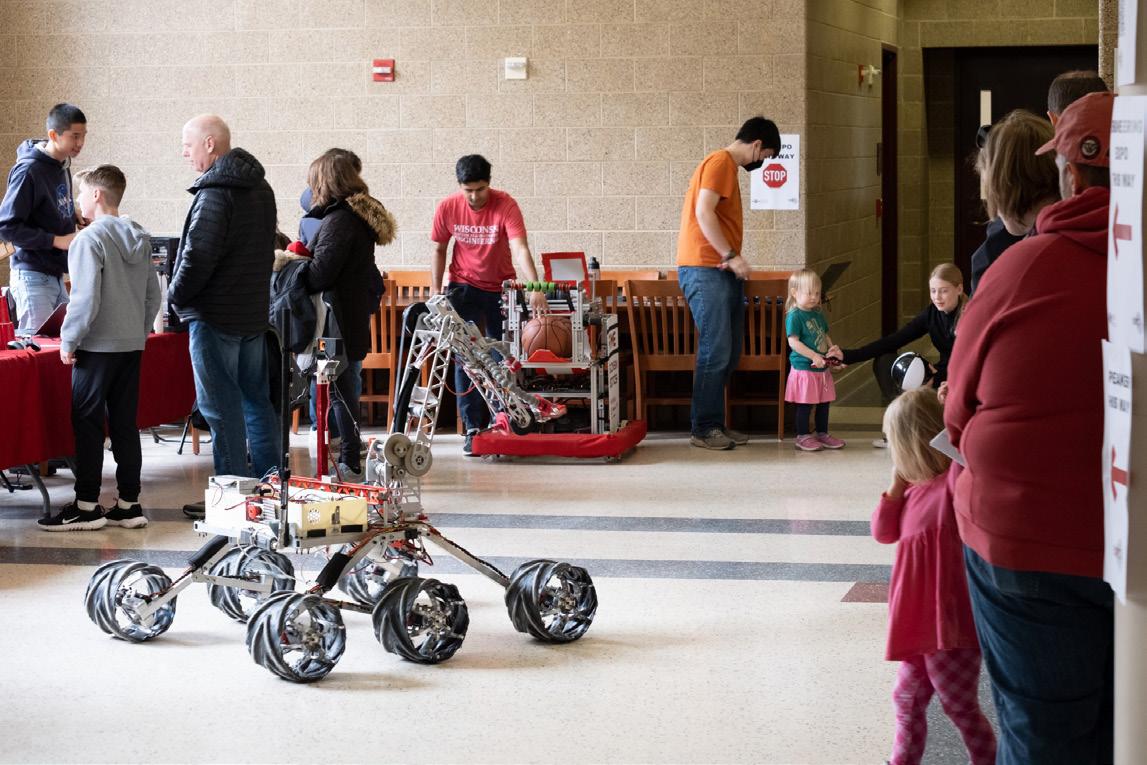
volunteer as the Oshkosh representative,” Zhao said. “[It’s] really cool to hear because at the end of the day, that is our goal for this event.”
By Liam Beran STAFF WRITER
Out of numerous exhibitions at the 2023 University of Wisconsin-Madison Engineering Expo, a “makeshift” UW-Robotics Mars rover was one that Expo Executive Chair Steven Zhao was particularly interested in highlighting.
“Seeing how a drone or a robot like that works, it’s really cool for students to build their curiosity and be fascinated,” he said.
“Sparking ideas and igniting potential” for future engineers inspires the expo, which brought in keynote speakers, around a dozen hands-on activities and more than 50 engineering student organizations, Zhao explained.
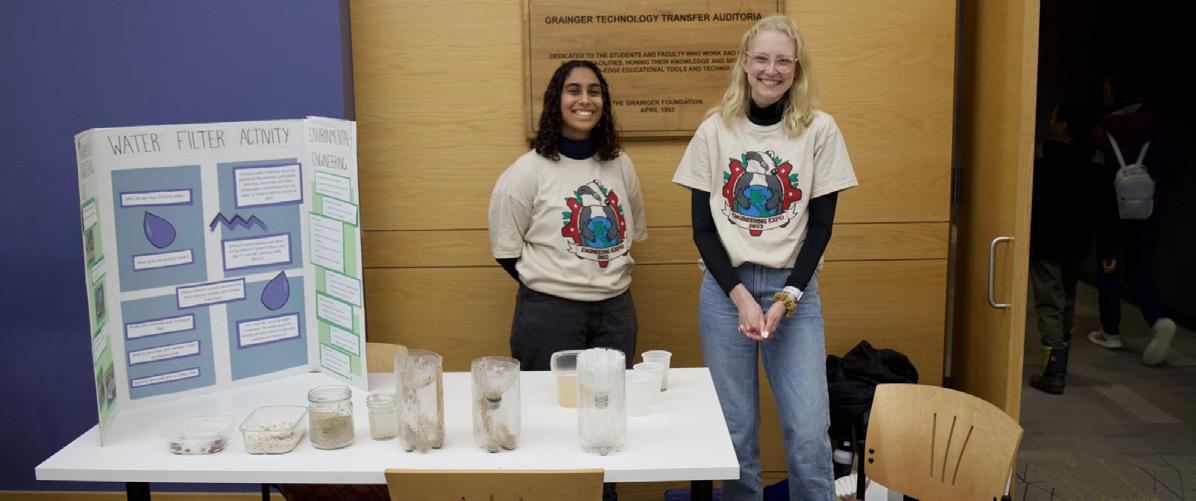
Those exhibitions, spanning throughout UW-Madison’s engineering campus, were scaled down to a “middle school level of content” for the younger students visiting.
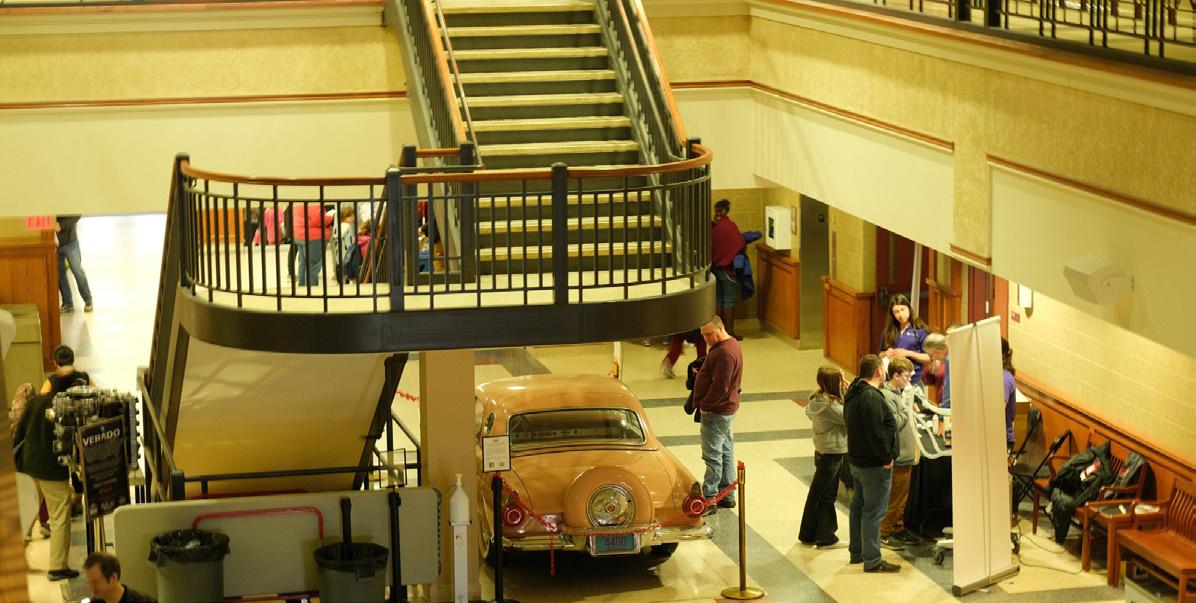

The expo first began in 1940 and changed over the years to its current form as a two-
day event. Friday is reserved for invited schools, Zhao said, with Saturday open to the public — attendance on both days is free of charge. Around 1,500 students were invited Friday, and there were an estimated 3,000 to 4,000 attendees Saturday, according to Zhao.
The event’s history inspired Zhao during the planning process, a year-long e ort by the 14 students on its executive board.
Zhao explained that selecting themes for the exhibitions was an old tradition the current executive board brought back after going through 1990s booklets advertising the event. This year’s theme — environmental sustainability — was selected to coincide with the weekend of Earth Day.
One industry presenter Zhao spoke to on Friday said “he visited expo as a kid when he was nine years old.” That experience “inspired him to become an engineer,” Zhao said.
“Ever since he went into corporate and got his engineering job, he’s come to the expo to
In preparation, Zhao and other executive members reach out to student organizations potentially interested in showcasing their work, and rely on industry connections and sponsors to run the event.
The College of Engineering’s response, particularly toward providing lecture hall space, has been one of “acceptance and appreciation,” Zhao said, with the dean of the college, Ian Robertson, “encouraging professors to either cancel their class or find a di erent area to host it online, so that we can have expo on campus, because he knows the legacy behind it and what it’s doing to build community.”
What’s on display:
Mars rovers
Ben Nowotny and Andrew Engedal, members of UW-Robotics, showcased a rover “designed around what a rover might actually have to do on Mars” that will be used in the University Rover Challenge competition.
“The science is my favorite,” Engedal said. “There’s a lot of interdisciplinary work going on because we have to collect
soil samples and then we need [biologists] to analyze them. We even have physics students that work on a spectrometer to analyze chemical bonds — it’s very similar to what an actual Mars rover would have to do.”
Nowotny said there was “a lot of positive engagement both yesterday and today” from those viewing the rover, which the two piloted around an area in the mechanical engineering building.
“A lot of people like seeing both the rover and all of
Beek explained.
“It’s a very interesting club, not traditional in any sense of the way. It forces not only kids but also their parents to think outside the box and take something like concrete, that’s not a very e cient material, and make it into a boat that floats,” said Beek.
Model hearts
Michael Chiariello, a biomedical engineering student at UW-Madison, used a model heart filled with liquid, which participants could squeeze themselves, to demonstrate how di erences in aorta sizes a ect the heart’s ability to pump blood.
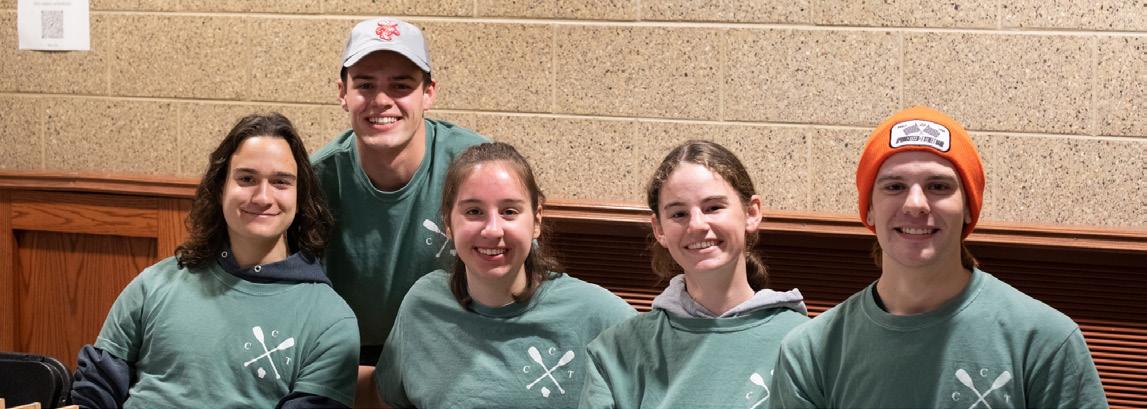 Steven Zhao UW-Robotics
Steven Zhao UW-Robotics
the other outreach projects we have — we think it’s a good fit for younger audiences that maybe are getting introduced to STEM,” he said.
Concrete canoes
Jared Beek, a member of UW-Madison’s Concrete Canoe team, presented at a booth alongside his other team members.
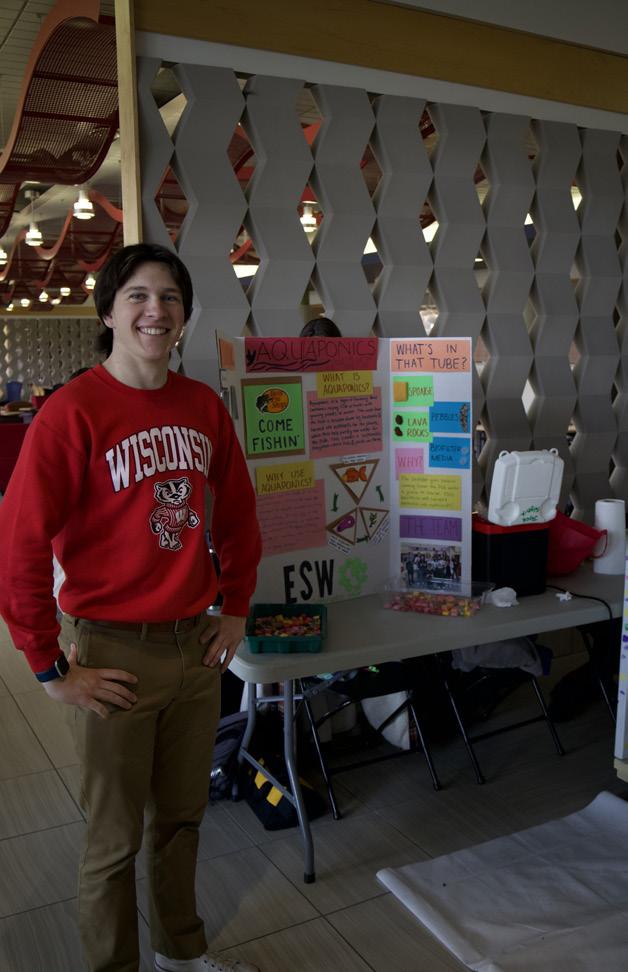
“We design, build and race a boat made out of concrete,”
“Unfortunately, there are some kids who are born with skinnier aortas, called coarcted aortas [that are] smaller in diameter. This makes it much more challenging to pump blood to the rest of the bodies — there’s much higher resistance,” Chiarello said.
The model heart had two differently-sized tubes that could be attached to it, with the one smaller in diameter meant to represent a coarcted aorta. Chiarello wanted to show “how interesting the heart organ is and get kids a little bit more excited about science,” in addition to “demons[trating] a complex idea in a simpler way.”
news dailycardinal.com Thursday, April 27, 2023 l 7
“It’s really cool for students to build their curiosity and be fascinated.”
LIAM BERAN/THE DAILY CARDINAL NICK DUDA/THE DAILY CARDINAL NICK DUDA/THE DAILY CARDINAL LIAM BERAN/THE DAILY CARDINAL NICK DUDA/THE DAILY CARDINAL NICK DUDA/THE DAILY CARDINAL NICK DUDA/THE DAILY CARDINAL LIAM BERAN/THE DAILY CARDINAL NICK DUDA/THE DAILY CARDINAL
“I will miss the community and friendships — point blank period. Every single writer, photographer, graphic artist, editor, podcaster, and business and social media sta er not only play an integral role in creating reliable, well-rounded and relevant news coverage but make up a tight-knit group of people I am so grateful to call my friends. The Cardinal is not just a place to snag a few bylines or learn how to report, but an institution where life-long friendships are made. As my time as Editor-In-Chief comes to an end, I don’t think it’s the stories or long nights spent editing in 2142 Vilas I’ll remember most, but instead the friends by my side every step of the way.”
— Sophia Vento, Editor-In-Chief
“Toward the end of the 2020-21 academic year, I experienced my first annual softball game against the Badger Herald. It marked a return to in-person gatherings with The Daily Cardinal team, but it also confirmed the competitive edge that comes with our newspaper’s unity. Freedom of expression in 2142 Vilas Hall not only made us strong coworkers but powerful peers outside the o ce, too. Cardinal culture embraces the passionate, the quirky and the willing to learn. To some, it’s just a newspaper. But to ‘dirty birds,’ it’s an impactful legacy of student journalism and camaraderie — one I’ll cherish with pride and gratitude for years to come.”
— Jessica Sonkin, Managing Editor
A Farewell to our Outgoing Editors
April 27, 2023
“My favorite Cardinal memory was getting to shake Joe Biden’s hand while doing coverage of his speech in Madison.”
• 9
— Clare McManamon, Social Media Manager
“I’ll miss being part of such a supportive, open group of people! I have never felt more valued as an artist, team-member or person than I have in this o ce. DC Forever <3”
— Zoe Bendo , Special Pages Editor and Graphics Editor Emeritus
“I will miss the o ce, the people and the freedom to be more or less whatever I wanted to be.”
— Anupras Mohapatara, Editorial Board Member and Opinion Editor Emeritus
“I will miss having meetings-of-the-minds with graphics, management, photo and special pages for the design of the AP issues!”
— Kodie Engst, Copy Chief
“I’ll miss chatting with my awesome writers the most, and my favorite Cardinal memory is Annabella’s dinner party she hosted this semester.”
— Madeleine Afonso, Campus News Editor
“I will miss being around people with the same passion for news and storytelling as me, and the warm, welcoming feeling I got every time I got into the o ce.”
— Gina Musso, Human Resources? Friend? College News and Features Editor Emeritus

“I will miss hanging out in the o ce for print night and getting to chat with everyone!”
— Sophie Walk, Life & Style Editor
“My favorite memories are bringing a ton of writers and editors to the o ce for midterms coverage and having my first election night pizza.”
— Hope Karnopp, News Manager
“I will miss getting to see first hand all the opinions that Madison students have!”
— Priyanka Vasavan, Opinion Editor
“I will miss being able to walk into the o ce anytime of the day and being able to chat/hang with my friends! The o ce is nothing special, but the people inside always brighten my day :)”
— Anthony Trombi, College News Editor
“It’s cheesy, but I’ll definitely miss the people. We’ve got such an amazing team of people, and everyone has been a joy to work with.”
— Julia Wiessing, Science Editor
“Working with my co-hosts from Sex Out Loud to create episodes for Out Loud for the past 2 years has been one of the most rewarding experiences. I love my co-hosts and am so proud of the work we’ve put into our little podcast. I’ll miss meeting with them to film every other week.”
— Elena Price, Podcast Director
“I will never have another job where I’m allowed to sleep in the o ce, decorate the walls with post-it notes and make freshmen attend sporting events while hungover.”
— Donnie Slusher, Sports Editor
“I’ll miss the people who make the Cardinal what it is. The Cardinal became an escape from my usual social circle and I’ll forever appreciate the genuine, goofy people who made a chaotic o ce home. Every day was an unpredictable but beautiful fusion of productivity and partying that only a group of deadline-driven individuals could achieve.”
— Em-J Krigsman, Editorial Board Chair and Opinion Editor Emeritus
“Hosting the news team dinner party a few weeks ago is one of my favorite Cardinal memories. Having every one over to cook and feel classy was so much fun. I’ll miss all of the amazing friends I’ve made here and will forever cherish these memories.”
— Annabella Rosciglione, Features Editor
8 • dailycardinal.com
GRAPHIC BY ZOE BENDOFF (ONE LAST TIME </3)
Conservation from a pathogen perspective
By Michael Hensley STAFF WRITER
Conservation is at the forefront of the challenges we are addressing as we move forward into the future. Everywhere we look, there’s a new study highlighting the need to conserve a particular species or region of the planet.
As the human population grows, our ability to conserve land and resources becomes harder and harder. For this reason, it’s imperative we understand what conservation truly entails. It’s commonly understood that the basis of conservation centers around the protection of the natural world, but as we dig deeper into the topic, it can often become nebulous and hard to decipher.
National Geographic describes conservation as “the act of protecting Earth’s natural resources for current and future generations.”
These resources include air, water and soil, as well as the wild flora and fauna that make up Earth’s biodiversity.
Since conservation encompasses such a wide range of issues, there are a wide range of conservation efforts to meet the challenges. Some of these efforts include habitat protection, endangered species watch lists and carbon use mitigation to curb the effects of climate change.
While all conservation e orts may have good intentions, there may be di erences in the level of impact each e ort has. Some are far more e ective than others, and some deal with more urgent issues. As we move toward a more sustainable future, conservation e orts must be looked at under the lens of how e ective they are and how urgent the issue is. Determining these factors gives us a methodical approach that could save time and resource investment.
This is better understood by looking at a tangible example which highlights the intricacies that can come with conservation efforts. There are many possible instances to explore, but conservation from the perspective
Lake Mendota: To swim or not to swim?
more prevalent and increasingly affecting Earth’s biodiversity.
Dr. Matthew Fisher and his team in the Department of Infectious Disease Epidemiology at Imperial College London found emerging fungal diseases in both plants and animals have been on the rise since the late 1990s. Some of these diseases have led to widespread declines in infected host populations, such as Pseudogymnoascus destructans, the fungus causing white nose syndrome in bat populations across North America. This pathogen has resulted in an alarming 60% to 98% population decline in some species of bats, according to a 2015 study at the University of California, Santa Cruz.
To help conserve global biodiversity, it’s important to research these pathogens and find ways to mitigate them. But how do we go about mitigating their e ects?

The answer seems simple on the surface. If we understand how to control fungal pathogen outbreaks, we mitigate their effect on biodiversity and conserve an important part of our world. But upon closer examination, determining which species of fungi are most threatening to our biodiversity and which ones we can effectively mitigate becomes a painstakingly arduous challenge.
The first step in deciphering between fungal pathogens is dividing them into two categories: pathogens that infect plants versus pathogens that infect animals.
Fungal pathogens that infect plants are considered an urgent issue, and for good reason. Fisher and his team estimated plant-infecting fungi destroy enough crops to feed around 600 million people annually. Plantinfecting fungi are considered high priority in pathogenic research, as mitigating their effects could lead to saving resources, time and human lives. For this reason, curbing the effects of plant-infecting fungi has been a high priority for quite a long time.
However, fungal patho
underestimation of their impact. While this attitude has begun to change as research has started to uncover the challenges and potential impacts of these pathogens, understanding these impacts includes looking at the pathogenic species, the host and the environment they inhabit as an interconnected system.
Together, the host, environment and pathogen are commonly called the disease triad. Each factor and how they interact are important in understanding disease dynamics.
The host factor includes variables that impact the level of host susceptibility. Variables like age and preexisting health conditions determine how susceptible the host is to a pathogen. For example, older dogs are at a high risk of contracting mange, a skin disease caused by mites.
Next, the environment is considered a factor because its constant fluctuations and changes can influence host-pathogen interactions. Variables like seasonality and weather patterns can potentially exacerbate infections or even facilitate recovery. For example, influenza is more prominent during the winter than it is in the summer due to its ability to persist in colder air temperatures for longer periods of time.
The final factor of the disease triad is the pathogen itself. Variables such as transmission method, infection severity and resistance to treatments play an important role in determining the severity of impact a pathogen can have.
When considering the disease triad, it is important to distinguish the pathogen as either primary or secondary.
A primary pathogen is a disease-causing agent able to establish an infection in a healthy host regardless of the environmental conditions. It is likely highly infectious and aggressive.
In contrast, secondary pathogens — often called opportunistic pathogens — have a more complex relationship with the environment and the host because their ability to infect relies on both host and environmental conditions.
Secondary pathogens will not establish an infection without the assistance of other such as er or not a host is immunocompro -
Continue reading @ daily-
By Madelyn Anderson STAFF WRITER
As summer draws near and sunlight drenches campus, students are anxious to get outdoors.
One of the most popular ways to enjoy nature and beat the heat is swimming in Lake Mendota. The beloved body of water boasts refreshing waves and idyllic views, but what else does it hold?
Pollution, specifically algae, is a common danger to aquatic areas. So, before you head to the terrace, consider adding some science to your beach bag.
Lake Mendota is part of a larger river system referred to as the Yahara Lakes, which also encompasses Lakes Monona, Wingra, Waubesa and Kegonsa. These lakes have been experiencing problems with pollution for years, most notably due to their high phosphorus concentration. Phosphorus causes increased biological production, classifying Lake Mendota as eutrophic.
Eutrophic lakes often cause unhealthy plant and animal growth. When lakes become eutrophic, the body of water becomes overcrowded, which causes respiration imbalances in its inhabitants and poses a threat to human health.
Unfortunately, the uptick in organisms means an increase in blue-green algal blooms, often referred to as “harmful algae” because they pose dangerous health concerns to animals and humans. Negative side effects of blue-green algae contact include flulike symptoms as well as skin and eye irritation. It’s important to be aware of these risks and keep a close eye on the health of yourself
and your pets after a day in the water.
Scientists and volunteers are committed to helping community members monitor Lake Mendota’s water quality. The Wisconsin Department of Natural Resources (DNR) collects data each summer and found Lake Mendota has been a solidly eutrophic body of water with poor water quality over the past five years.
Armed with this information, how else can you protect yourself?
The Centers for Disease Control and Prevention warns citizens to check for advisories and avoid all blooms as it’s hard to tell which are harmful. However, some clear signs of unsafe water include discoloration, unusual scents, deceased animals on shore and foam or other surface streaks. If you happen to come into contact with blue-green algae, rinse yourself o as soon as possible and seek medical attention as needed.
Besides water monitoring and increasing public awareness, what other solutions are there to the Yahara Lakes pollution problem?
The Clean Lakes Alliance has been attempting to reduce phosphorus runoff from agricultural, erosion and leaf management practices. Natural causes like flooding and rainfall can also contribute to the high nutrient content, which means drought years are typically safer to swim in.
No matter the weather, be aware of the water you’re interacting with. Whether you’re taking a dip, casting a line or paddling into the sunset this summer, Lake Mendota can be a recreational haven if navigated safely.
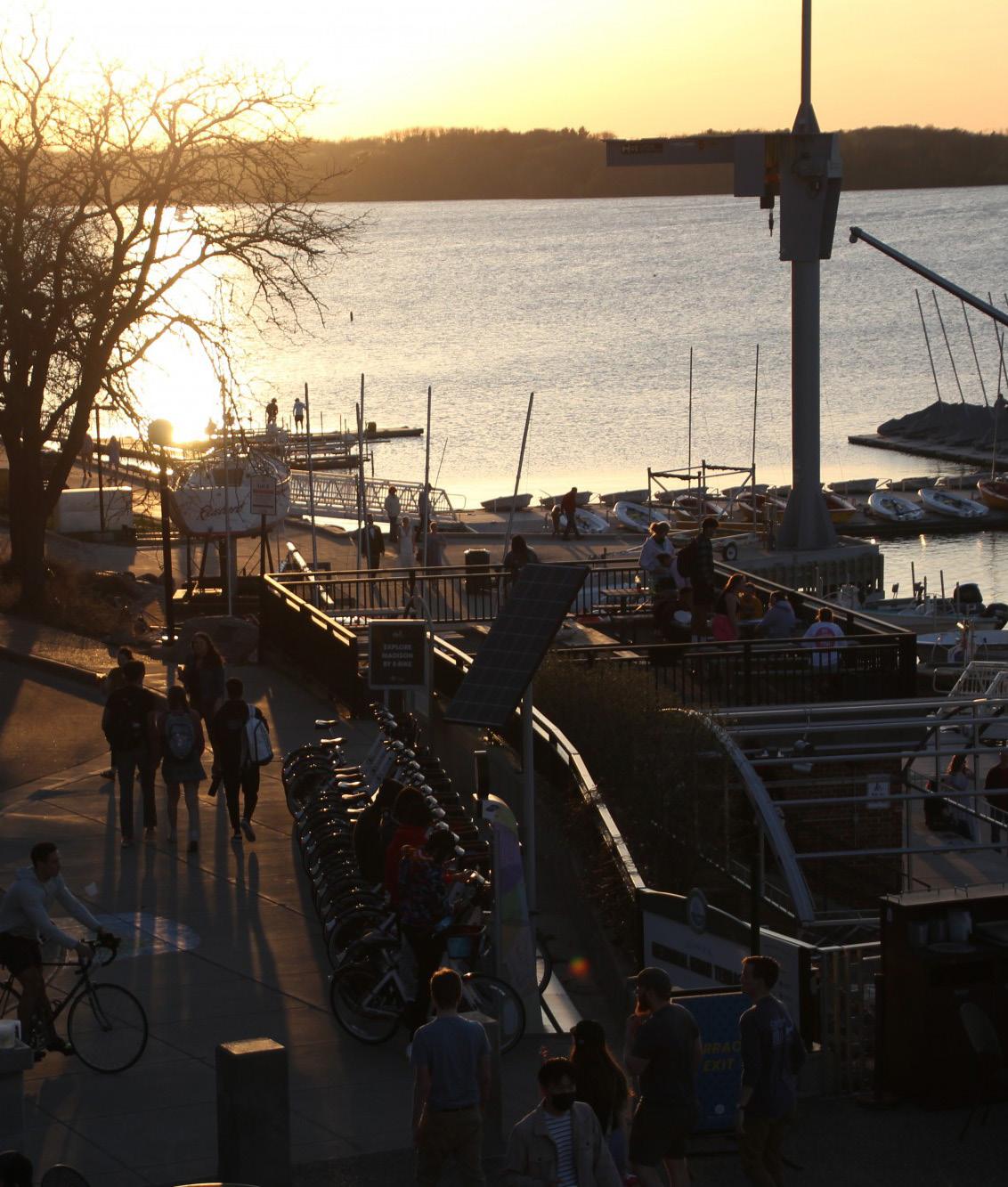
ZOE BENDOFF/THE DAILY CARDINAL 10 Thursday, April 27, 2023 science l dailycardinal.com
DRAKE WHITE-BERGEY/THE DAILY CARDINAL
NFL Draft: Predicting Badger landing spots
By Matthew Neschis STAFF WRITER
With the 2023 NFL Draft beginning today, a handful of Wisconsin Badgers eagerly anticipate their name being called on draft night. Exactly when that happens, however, remains to be seen. Here’s a look at where the top departing Badgers may land.

Joe Tippmann, Center
Tippmann headlines this list as arguably the most appealing Wisconsin prospect entering the draft. The towering interior lineman acted as a pillar of the Badgers’ o ensive line for the past two seasons and is viewed by many scouts as one of the best centers in this year’s draft.
As a highly sought-after recruit rated four stars by 247Sports, Tippmann came to Wisconsin with an embellished trophy case. While playing for Bishop Dwenger High School, the Fort Wayne native was named Indiana’s Mr. Football and conference MVP, an incredible feat for an o ensive lineman.
Following a redshirt freshman year and injury-riddled sophomore season, Tippmann cemented himself on the Badgers’ front line in 2021. Over the last two seasons, he’s started all but one game at center, a position he’d never played before joining the Badgers.
Tippmann is a relentless blocker who overpowers defensive linemen with his elite strength and blazing speed. He displayed his freak athleticism and football knowledge on pulls and cuto s throughout the season, creating open running lanes while serving as the lead blocker for running back Braelon Allen. A fast learner and versatile prospect, Tippman is primed to slot into any pro scheme as a day one starter.
Like all raw prospects, Tippmann isn’t perfect. At 6 feet, 6 inches tall, he is two inches taller than the average NFL center. Tippman’s height puts him at a disadvantage against shorter, quicker rushers who are able to wrap under his hands and drive him back on first contact to win the leverage battle.
Tippmann’s six holding penalties in 2022 may also be cause for concern, suggesting he loses discipline once beaten.
Regardless, Tippmann should warrant a second or third round selection in this year’s draft. Several teams that may be interested in his talents are the New York Giants, Arizona Cardinals and Bu alo Bills.
Mitch Morse currently mans the center position for the Bills, but the veteran has a contract that expires in 2024 and a long history with concussions. Following quarterback Josh Allen’s expressed desire to run the ball less as his career progresses, Bu alo could look to strengthen their pass protection for the foreseeable future. The Bills have already done their due diligence on Tippmann, inviting the center to their facility on a top-30 visit.
Prediction: Bu alo Bills, pick 59
Keeanu Benton, Defensive Tackle
In the case of Tippmann and Benton — the defensive tackle who lined up across him in practice daily — iron truly does sharpen iron.
Benton excelled as a multisport athlete in high school, earning a three star recruit rating by 247Sports for football and all-state honors in wrestling. Despite dropping the latter sport in college, his
wrestling skills transitioned seamlessly to the gridiron.
Wisconsin handed Benton an immediate role on the defensive line when he arrived in 2019. Though Benton played13 games as a freshman, it wasn’t until his senior year that the imposing tackle dominated at his position, amassing 25 tackles, 28 total pressures and six sacks in 2022.
First characterized as a runstu ng defensive tackle, Benton sharpened his game to become a well-rounded pass rusher as well. His wrestling background allows him to drive centers back through outstanding hand placement and power, while his lower body strength lets him cover ground quickly for a 315-pound lineman.
Similar to Tippmann, Benton’s height may pose issues at the next level. At 6 feet, 4 inches, Benton’s upright playstyle allows o ensive linemen to get under his pads and drive him to the ground to easily win leverage.
Benton dazzled scouts at the Senior Bowl in February and could be selected as early as the second or third round. Teams that could look to acquire him include the New York Jets, Los Angeles Chargers and
Detroit Lions.
The Lions used a secondround pick on defensive lineman Levi Onwuzurike two years ago, though his nagging back injuries raise cause for concern. And head coach Dan Campbell routinely preaches grit and toughness on the football field — traits Benton perfectly encapsulates.
Prediction: Detroit Lions, pick 55

Nick Herbig, Outside Linebacker
Herbig follows in the footsteps of fellow NFL-caliber linebackers from Wisconsin, including T.J. Watt, Andrew Van Ginkel, Leo Chenal and Jack Sanborn. The four star high school recruit lived up to his rating, leading the stout Badgers defense while starting all but one game over his three-year collegiate career.
As a stand-up rusher in Wisconsin’s 3-4 defense, Herbig led the Badgers in sacks each of the past two seasons with nine in 2021 and 11 in 2022. He additionally recorded 30 tackles and 34 total pressures this past season, earning a consensus spot on the first team 2022 All-Big Ten lineup.

Herbig possesses a wide array of pass rushing moves that allow him to terrorize his opponent’s backfield. His quickness o the ball, fluid motion and understanding of rush angles let him frequently squeeze past blockers around the edge. Additionally, training alongside older brother Nate — an o ensive guard for the Pittsburgh Steelers — has prepared Herbig for the grueling demands of the NFL.
But what Herbig brings in speed, he lacks in size. To find consistent edge rushing success in the NFL, Herbig will likely have to bulk up and add significant lower body strength. Teams are viewing him as a situational pass rusher — not an every-down player — due to his inexperience in pass coverage.
Despite an explosive pass rushing arsenal, Herbig’s flaws will likely drop him to the third round. The Atlanta Falcons, Philadelphia Eagles and Kansas City Chiefs could all use a player with his abilities.
Following the release of defensive end Frank Clark, the Chiefs will likely take a speedy edge rusher in this year’s draft. Though recent free
agent signing Charles Omenihu currently holds the starting position, Herbig would serve as a third-down contributor to apply added pressure.
Prediction: Kansas City Chiefs, pick 95
Other notable departing Badgers
O ensive lineman Tyler Beach and safety John Torchio will also try their hand at the NFL.
Beach started the past three seasons on the o ensive line for the Badgers, hopping between both tackle spots and left guard. While he excels blocking the run, the versatile lineman struggles against speed rushers in pass protection and lacks the athletic upside NFL teams are looking for in the draft.
Torchio showcased his strong hands and keen ability to track the football the past two seasons, amassing eight interceptions and holding opposing quarterbacks to a sub-60 rating when targeted. However, his subpar tackling and one-dimensional play might deter potential draft suitors.
Though Beach and Torchio likely won’t hear their names called in the draft, teams could take a chance on them in the ensuing days. And, as linebacker Jack Sanborn proved last year with the Chicago Bears, undrafted Badgers routinely make an immediate impact in the NFL.
Prediction: Undrafted free agents
sports
Keeanu Benton entered Madison as a three-star recruit from Janesville, before becoming a key cog in Jim Leonhard's defense for all four of his years as a Badger.
TAYLOR WOLFRAM/THE DAILY CARDINAL
TAYLOR WOLFRAM/THE DAILY CARDINAL
dailycardinal.com Thursday, April 27, 2023 11
Nick Herbig will follow in the footsteps of Badger linebackers in the NFL, alongside T.J. Watt, Andrew Van Ginkel, Jack Sanborn and Leo Chenal.
‘We Are Not Ghouls’: A testament to the atrocities of the war on terror
 By Ian Wilder STAFF WRITER
By Ian Wilder STAFF WRITER
In the years after the 9/11 attacks, there have been countless stories of courage, hope and faith illustrating American strength and tenacity in defense of peace, even when hatred, anger and fear dominated much of the country.
Few are as impactful as the story of “We Are Not Ghouls,” a documentary film on the work of Judge Advocate General (JAG) attorney Lieutenant-Colonel Yvonne Bradley to free Guantanamo Bay detainee Binyam Mohamed.
The movie tells the story of Mohamed — a U.K. citizen and recent convert to Islam — who was unable to return home from a trip to Afghanistan following the 9/11 attacks and subsequent American war in Afghanistan. He eventually made his way out of the country through Pakistan in 2002.
After being detained and spending time in prison in Pakistan for possessing a forged passport, Mohamed received charges of terrorism from the U.S.
For the next seven years, Bradley and other lawyers, journalists and human rights activists worked to corroborate Mohamed’s story of his prison time in multiple countries by the United States government. There were simultaneous movements in the U.K. to prove that the government there was complicit in imprisoning and torturing Mohamed, and other alleged “terrorists” into forced confessions. The search for the truth went to even unexpected corners, with Boeing subsidiary Jeppesen allegedly playing a role in secretly transporting American detainees between these various facilities.
Bradley, a military attorney who volunteered to defend a Guantanamo prisoner, was assigned to Mohamed’s case when Mohamed ended up in the infamous military prison. Human rights attorney Clive Smith also spoke of his experiences with Mohamed’s trial. What followed was a years-long process in which
Mohamed and Bradley built up a shaky relationship in the hope of proving his innocence in the court of law and public opinion.
Bradley was initially skeptical of Mohamed, but she instantly knew something wasn’t right upon receiving the case files from Smith. She would go on to risk her career and arrest to prove his innocence.
In her narration of the events, Bradley did a dynamic job recalling small and large details from her work on the trial. Notably, Bradley’s description of the small moments historical accounts likely wouldn’t contain, such as Mohamed keeping a promise to cook her a “pasta dinner” once he left confinement, masterfully captured the human element
ful and memorable moment after countless descriptions and recounted details of Mohamed’s torture, the movie cuts to a journalist who asks then-Defense Secretary Donald Rumsfeld “if any of the prisoners you captured are innocent.”
Rumsfeld and much of the room around him erupted in laughter.
A tonal shift only comes toward the end of the movie, when it cuts to a speech delivered by then-President Barack Obama, who admits, “We may have tortured some folks.”
Bradley’s narration is wellbalanced by some of the other key figures in the trial and her life, including Smith, Bradley’s sister Pam Bradley, investigative journalist Stephen Grey
out were overlapping images a Guantanamo inmate had drawn of his experiences being tortured, and the use of playing cards to illustrate the complex JAG attorney structure.
The movie does not delve into the discussion of whether Mohamed was guilty. Rather, it focuses on the question of whether anyone deserves the treatment Mohamed received.
All of these elements e ectively come together to create a powerful record of American cruelty in pursuit of the war on terror. The film brings into the spotlight — but leaves the audience to ponder — questions on American ethical values surrounding international leadership, politics and patriotism, among others.
Security,” Thompson said. “A week went by, he didn’t show up.”
“I went to try and see him, and I got to visit him through a glass window,” Thompson continued. “His teeth had been knocked loose and his jaw was wired shut. When he eventually came back, I asked him, ‘What’s going on, how can we help you,’ and he just said, ‘I don’t want to tell you because everyone that gets involved, they mess up their life — so just pretend like it didn’t happen.’”
This experience led Thompson to read books and watch documentaries in an attempt to understand the war on terror and what the U.S. had done to its perceived enemies, he said. His research led him to the book “The Guantanamo Lawyers,” which included essays from attorneys who defended the prisoners of Guantanamo.
Bradley’s essay stood out to him and led Thompson to her.
“I hope that, moving forward, this story is preserved for young people to see a shining example of someone that faced adversity, saw someone who was being oppressed and treated unjustly, and — at a great personal cost and risk — stood up and decided that they weren’t going to be a part of it,” Thompson said at the screening.
Bradley pointed out that the fight for justice for some of these individuals is far from over.
behind the incredibly polarizing 9/11 trials.
Bradley’s testimonies of the trial are put alongside spine-chilling voiceovers from Mohamed detailing his horrific treatment while detained. In some of the most unforgettable moments of the film, Mohamed spoke of his genitals being lacerated by a sharp razor or spending months on end in a dark room listening to never-ending audio recordings of people screaming.
The movie often cuts to archival footage of U.S. government officials or proceedings that deny the torture. In a power -
and Lieutenant Colonel Darrel Vandeveld. Vandeveld spoke in the film about resigning his position in the Office of Military Commissions in Guantanamo Bay after deciding he could not ethically prosecute some of these cases.
Director Chris James Thompson — a Wisconsin native and University of WisconsinMilwaukee graduate — weaves these elements together to allow each individual to speak for themselves, effectively juxtaposing imagery and graphics that complement the story incredibly well. Moments that stood
Bradley, her sister and Thompson attended a screening of the film last Saturday as part of the Wisconsin Film Festival, where UW-Madison Chancellor Jennifer Mnookin delivered opening remarks.
Thompson spoke in a Q&A about his motivations for creating the film following the screening.
“Twenty years ago, I was a film student at UW-Milwaukee. One of my classmates was a Jordanian immigrant, his name was Abdel. One day he didn’t show up for school and my professor told us he had been detained by the Department of Homeland
“We’re 21 or 22 years into Guantanamo and it’s still open, and there’s 30-something men there who they would never try [in court]. If that was the other way around and we had American citizens being held someplace, detained and not put to trial, we would be out of our mind,” Thompson said. “But we allow that to happen on the other end.”
“There is a solution: try them or let them go. I know that’s controversial, but that’s what due process is about — the rule of law,” Bradley continued. “If we expect to expand that across the globe, we have to start that at home.”
Andrew Bird earns chirps from a devoted audience
By Ace Filter STAFF WRITER
Indie rock musical artist Andrew Bird, born and raised in the Chicago area, traveled to Madison on his “Inside Problems 2023” tour earlier this month at the Sylvee. Bird waltzed onto the stage to cheers of excitement from a diverse crowd, bearing his signature violin and a soft smile. Accompanied by both a bass guitarist and his opener Ted Poor, Bird jumped right into a set that wowed the crowd.
Preceding Bird’s entrance, Poor greeted the audience with his unique skills on the drum set. Utilizing timpani mallets, traditional drumsticks and various other auxiliary instruments, Poor pounded his way through the 30 minute opening set. Abstract in style and unconventional
in instrumentation, Poor’s beats were received more enthusiastically by some audience members than others. Regardless, there were many head bobs and applause after each song in his opening number.
Following Poor’s set, a 30 minute interval left the audience a bit restless as they stood waiting for the highlight of the night. The atmosphere suddenly changed as Bird took center stage. The crowd cheered enthusiastically as the lights dimmed. A gentle magenta spotlight lit up Bird as he lifted his violin to his chin. The next minutes fluttered by as Bird’s moving shadows drifted across the back of the stage.
When the trance was at length lifted by the ending of the song, a simple glance at the audience showed many content faces. Bird’s fans are best
described as easy-going and serene. His music and relaxed demeanor attract a loyal fanbase, evident in the enthusiasm of the audience. Although, some stood stoically, completely immersed in Bird’s beautiful musical skills.
In the wake of his dreamy opening, Bird switched gears to his most famous song, “Sisyphus.” Now carrying an acoustic guitar, he sang passionately and whistled the signature tune of the song to the enthusiastic cheers of the crowd. The concert commenced as such, consisting of captivating lighting work and Bird’s profound disposition.
Bird’s talent is admirable. His comfortability with the violin and guitar is amazing. The way he plays these instruments is itself unique — he plucks the violin like a banjo and
beautifies ugly notes. Several times during his show, I got full body shivers. Bird’s lyrics themselves are art. “Sisyphus” draws upon metaphors of Greek gods and appears to express a hopeless spirit:
“I’d rather fail like a mortal than flail like a god, I’m a lightning rod / History forgets the moderates /
For those who sit recalcitrant and taciturn /
You know I’d rather turn and burn than scale this edifice, yeah.”
Other notable songs from Bird’s set include “Bloodless,” “Eight,” “Three White Horses” and “Pulaski at Night,” his most streamed song on Spotify. Bird draws inspiration from his home of Chicago in many of his song lyrics and instrumental vibes.
The night wrapped up with a dou-
ble encore and hearty applause from the audience. The crowd buzzed as Bird and his accompanists exited the stage. Many drifted towards the merchandise line. As I collected my bag and readied to leave, I was happily surprised by the continued respectfulness and good nature of the audience. Bird’s fans vary from college students like myself to middle aged couples and parents with their excited kids. His music is versatile in its attractiveness and ability to touch people who travel di erent paths in life.
Overall, my experience at Bird’s concert at the Sylvee was quite positive. I enjoyed the music, musicians and audience. I would recommend both the Sylvee and Andrew Bird to those interested in the Madison music scene.
arts
dailycardinal.com 12 Thursday, April 27, 2023 l
PHOTO COURTESY OF THE WISCONSIN FILM FESTIVAL
life & style Reflections in an empty office
By Anupras Mohapatra STAFF WRITER
It was midday on a boring Wednesday in April. I had just sat through a class discussion in Vilas Hall, and I was making plans to get lunch from my favorite State Street spot immediately after. The day was as mundane as it could be.
As I was heading out of the building, I thought I would stop by The Daily Cardinal office. The door is wide open most times. Yet, this time, the door was firmly shut.
Most days, I would walk by, but this time I went in. A break from the mundane.
Sure enough, there wasn’t a soul in sight. Perhaps it was to be expected. It was only the previous evening that editorial staff spent hours electing the Cardinal’s management team for the next academic year — a grueling passing of the baton that makes our paper special but also makes for a pretty empty office in subsequent days.
I sat in the same spot I did the previous evening, the couch feeling as malleable as a bean bag. I then proceeded to look around the room. I was all alone, yet surrounded by history. By plaques, newspapers, trinkets and a stray baseball bat. By echoes of trying times and cheerful celebrations. I imagine this is what FC Barcelona great Andrés Iniesta felt like when he sat on the Nou Camp pitch all alone at 1 a.m. after his last game for his boyhood club.
I could not help but think of what is to come and what once was. I am headed full speed towards graduation. This layover at the office is only a temporary detour from mundaneness. A life of working a mundane office job to pay the bills awaits, wherever in the world I may be.
That doesn’t mean I am not excited about life after graduation, despite all the uncertainty I’m contending with. It’s just that the Cardinal is a dreamer’s
dream, and nothing in the “real world” will feel the same. At the Cardinal, I could roleplay as an eminent, possibly pretentious thinker. A columnist, sports reporter, science writer, poet, satirist, food and music critic all rolled into one.
My writing ranged from rhetorical to deranged, average to award-winning, but I was free. In a few weeks, my access to freedom will expire. I will probably start my own blog at some point, but it won’t have the same read-
like a workhorse, I lacked the visibility I thought my efforts merited. Maybe being a news writer would’ve earned me more visibility.
I remember feeling frustrated, particularly during the height of the pandemic. Perhaps it was just my insecurity. Sometimes, my innate competitiveness came in conflict with my desire to find a home at the Cardinal. I treated elections like promotion opportunities and lost four on the bounce. I even contemplated step-
friends’ is all the visibility that really matters.
Fender’s song continued blaring in my ear, and I heard the words “I catch myself in a mirror/see a pathetic little boy.” I joined the paper in 2019, when I was still 17-years-old. When the pandemic hit, I was 18. In many ways, I was a pathetic little boy. I lacked tact. I burned bridges with immaturity and impunity, even as recently as last year when I was, supposedly, a man.
The song came to an end, and by this point, I left the newsroom and returned to the couch in the main office. My stomach told me it was time to leave the office and get lunch. I turned off the lights and shut the door behind me, but this detour from the mundane stuck with me. Here I am, a few weeks later, writing about it.
I didn’t want to sugarcoat my time at the Cardinal as I’ve done in the past. This is an honest reflection. My tenure at the Cardinal has spanned different roles, roughly 80 bylines and several editorial board pieces. There have been countless fun print nights and memorable events. There have also been grueling night shifts and tears shed.
Overall, a mélange of good, bad and ugly — that’s what I think love is. Sometimes I joke to myself that I’ve never been on a date because I’m in a committed relationship with the Cardinal. Maybe there is some truth to that.
In a few weeks, an era will end; such is the nature of a student newspaper. A non-stop revolving door reliant on the passing of tradition.
ership or 131 years of history attached to it. It just won’t feel the same.
I wanted to add some music to the moment, so I started playing “Get You Down” by Sam Fender. Then, I walked into our newsroom — affectionately called the “news womb.” I once had the choice to become a news writer. I chose not to. I have occasionally wondered if I made a mistake. For all my laboring
ping away at one point. Work and home simply don’t mix. There was a lot of pain.
I will disagree with a few of the election outcomes till I die, but I also think the elections are insignificant in the grand scheme of things. I signed my name with a permanent marker on the whiteboard in the room last year. Seeing my name with some of my
It’s been a privilege to stand on the shoulders of giants. I don’t know when, if ever, I’ll return to the office after graduation. Maybe someday when my hair is all gray.
Until then, I hope current and future Cardinalistas remember, in the words of Liam Gallagher, “you only get to do it once.” Whether you’re padding your resume, devoted to the paper or both, make the most of every moment.
I know I will treasure my time at the Cardinal for life. The good, bad and ugly. All of it.
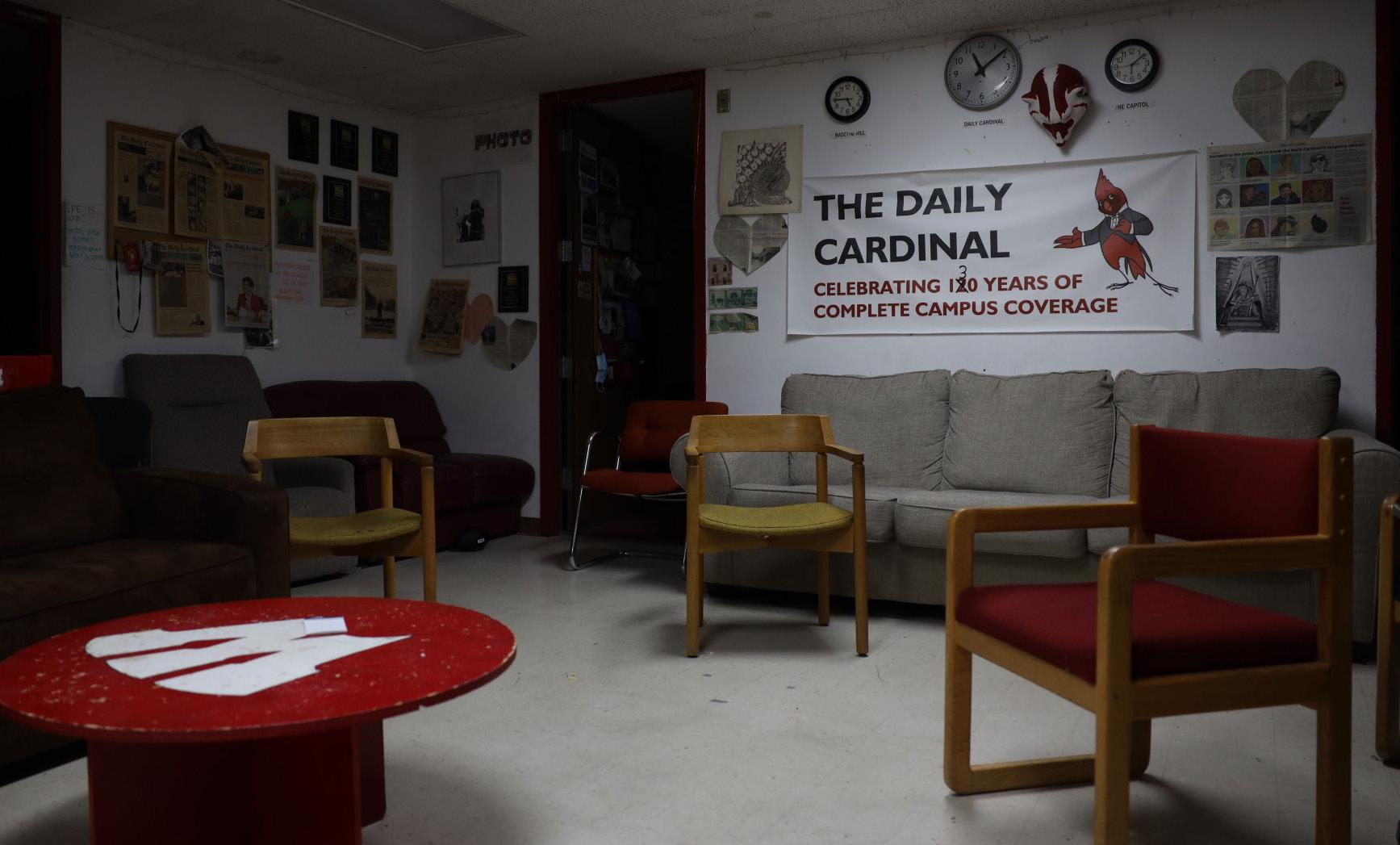
Jalisco Cocina Mexicana: Bringing a taste of home to Madison
By Lauren Aguila PHOTO EDITOR
Located downtown on the vibrant King Street, Jalisco Cocin a Mexicana’s new home sits among other well-known local restaurants like Tipsy Cow and Lucille. From its quaint and cozy dining environment to the decorative designs surrounding the room, Jalisco’s space compliments its unique menu.
Only recently opening its first-ever restaurant location, Jalisco has already made its mark in the city’s culinary scene.
From their Enchiladas Verdes to the specialty drinks served from La Barra, Jalisco o ers a variety of tasty dishes and beverage options. Brooke and Gerardo Hernandez, the owners of Jalisco, hope to bring their Western Mexican ties to those who are unfamiliar with the culture.
Brooke and Gerardo Hernandez started their business as a food truck under their previous name, Cultura Cali.
Originally from Guadalajara, Mexico, a city in the state of Jalisco, Gerardo Hernandez always envisioned opening his own restaurant after moving to the United States.
“We really wanted to bring a taste of home
to Madison,” he said. “Our goal is to stay as authentic as we possibly can to the culture and we hope that, eventually, it works out for the people of Madison.”
With a menu featuring dishes that remind them of home, Brooke and Gerardo Hernandez hope to highlight the authenticity of their restaurant’s cuisine — food they feel is often Americanized.
By incorporating traditional dishes, such as their Queso Fundido and Chicken Mole, the duo hopes their menu rea rms their genuine dedication to homestyle cooking.
“We hope to educate people into what we’re trying to do with our vision and how things are made in Mexico,” Gerardo Hernandez said.
While Jalisco’s modern appearance may throw o some customers, Brooke and Gerardo Hernandez said their design aspires to overcome stereotypes about Mexican restaurant design.
The pair hopes to o er an atmosphere that feels like home while containing elements of an extravagant dining experience.
“I want to get away from the idea that Mexican restaurants have to be ugly,” Gerardo Hernandez said.

“If you go to Mexico, they have beautiful, gorgeous restaurants. I want it to be a nice place with a modern and Mexican feel to it.”
Jalisco plans to continue advertising their new restaurant location through social media platforms, particularly Instagram, Brooke and Gerardo Hernandez said.
In the future, they hope to expand the
restaurant’s success with plans to add an outdoor patio seating area and partner with various local food and distillery companies.
“Once we get busy and once we get people in here, we’ll start experimenting and introducing more things,” Gerardo Hernandez said.
dailycardinal.com Thursday, April 27, 2023 l 13
DRAKE WHITE-BERGEY/THE DAILY CARDINAL
The Daily Cardinal Office sits empty after the last Editors meeting of the year.
“I know I will treasure my time at the Cardinal for life.
LAUREN AGUILA/THE DAILY CARDINAL
The good, bad and ugly. All of it.”
Work hard, play harder?
By Charlotte Relac STAFF WRITER
Students on the University of Wisconsin-Madison campus have mastered the idea behind the infamous “work hard, play hard” mentality — achieving academic success despite partying, sleep deprivation, substance abuse and su ering.
The recommended seven to nine hours of sleep a night often seems to be left out of the picture. But sleep deprivation is a serious problem that isn’t given enough recognition for its mental and physical impacts. Behind stress, college students rank sleep deprivation as the second leading cause of poor academic performance.
Reaching rapid eye movement around six to eight hours into your sleep cycle allows the brain to store information long-term so you can recall what you’ve learned later on, according to the American Psychological Association. The less sleep a student gets, the more likely they are to forget or misremember information, threatening their academic success.
Furthermore, lower grade point averages have been linked to fewer hours of sleep per night, according to the Washington Post.
The burnout of the “work hard, play hard” mentality has led to college-aged students regularly relying on ca eine to keep them awake throughout the day. However, this habit only wors-
By Alex Clark STAFF WRITER
ens their health and feeds a budding addiction. Ca eine intake in college students can be associated with depressive symptoms and higher levels of anxiety.
Although the right intake of ca eine actually has some health benefits, severe dependence can lead to high blood pressure and higher cholesterol levels, increasing the risk for heart disease later in life.
Poor academic performance may lead students down the path of substance abuse — like taking prescriptions they don’t need or aren’t theirs — to either have a good time or stay awake.
But not all students are a ected equally. Business majors and social sciences majors are associated with more substance abuse compared to liberal arts, humanities and STEM majors, according to a National Library of Medicine study.
Furthermore, the sense of pressure for students to be involved in multiple activities and clubs as a gateways to internships and full-time jobs adds to this stress. When academics, social life, campus involvement and leadership responsibilities accumulate, there is minimal room left for mental and physical care to stay happy and healthy.
Overworking your body and your mind can also lead to an increased desire to drink alcohol, according to a crosssectional analysis done by the National Library of Medicine.
For individuals with preexisting social anxiety, fatigue and fear of social situations may further this dependence.
As this addiction grows, more students rely on alcohol or other substances to fall asleep. About 25% of students rely on alcohol, marijuana or other over-thecounter substances to aid sleeping, according to the National Library of Medicine.
Although this intense way of life has its downsides, it has actually made UW-Madison stand out in a positive light.

As of the 2022-23 academic school year, UW-Madison was ranked among the top 10 public universities in the country, according to the U.S. News and World Report. The university also ranks number one for the best undergraduate insurance program of study and number
one for real estate.
As UW-Madison climbs its way to the top, students are convinced this heavy drinking culture and high stress atmosphere breeds academic greatness. As it turns out, students who work hard do tend to play hard, stemming from the motivation to succeed in life. A study done by a biologist at Queen’s University in Ontario demonstrated that 40% of the data linked accomplishment and leisure.
The study data describes the desire many people feel to leave something behind when they die. This represents the idea that mortality drives success, while also pushing individuals to live life to the fullest.
The motivation to have a balanced schedule, and make time for social events and education, is an impressive and unique
aspect of UW-Madison’s campus. Our vibrant and dedicated student body makes the university stand out during college admissions processes.
This “work hard, play hard” mentality has worked to attract thousands of prospective students. UW-Madison’s freshman class broke records in the fall of 2022, becoming the largest-ever class to attend the university. The number of applicants for the 2022-23 academic year was up by 11.9%, according to a university press release.
Furthermore, the number of incoming out-of-state freshmen has begun to surpass in-state incoming freshmen, demonstrating the school’s increasing nationwide popularity.
The ability to persevere year after year with the increasing academic strength and the same desire to be social cultivates a truly unmatched experience for college students.
If used as motivation instead of an easy way to breed unhealthy habits, the “work hard, play hard” mentality can allow for us to succeed at what we want while leaving room for a social life.
Charlotte Relac is a sophomore studying Journalism and Mass Communication. She is an Opinion Editor and a member of the Editorial Board. Do you agree that academic pressure can cultivate an unhealthy lifestyle? Send all comments to opinion@dailycardinal.com
Ozempic: The morality of miracle medicine
If you haven’t seen the commercials unsubtly played to the tune of the 1970s hit “It’s Magic,” you may recognize Ozempic from celebrity weight loss journeys. From Kim Kardashian to Elon Musk, some of pop culture’s most influential figures have allegedly lost weight using Ozempic.
But this medication is more than just a new weight loss fad for rich influencers. It has the potential to completely transform how we treat the biggest healthcare problem in the United States.
Doctors and patients have struggled to treat obesity and diabetes for decades. Obesity rates tripled over the past 60 years, and one in every $4 spent on United States healthcare costs is spent treating people with diabetes. Although these metrics are not without their flaws, it is undeniable that obesity and related complications are among the most impactful and expensive healthcare challenges in our country.
Drugs like semaglutide or Ozempic — the brand name and popular umbrella term for these new diabetes and weight loss drugs — are revolutionary. For the first time in history, we can safely and e ectively treat obesity, a chief U.S. health concern.
There are three main drugs in this new category: Ozempic, Wegovy and Mounjaro. The first two are brand names for semaglutide, and Mounjaro is the brand
name for tirzepatide. Ozempic and Mounjaro are only approved for Type 2 diabetes, but all three have shown powerful weight loss results with few temporary side e ects. In a 17-month clinical trial, Mounjaro helped a 230-pound obese person lose 50 pounds.
Ozempic and Wegovy are GLP-1 agonists, which means they mimic a naturally occurring hormone we release in response to food intake. After you eat a meal, GLP-1 triggers an insulin release to bring your blood sugar back to normal levels. It also suppresses appetite and controls when stomach contents empty into the small intestine. The hormone is a satiation signal that helps start our bodies’ regulation after a meal. Mounjaro mimics GLP-1 and GIP — another hormone proven to decrease food intake.
Healthy individuals release GLP-1 after an appropriate amount of food. However, our bodies are constantly reacting to how we behave. If you continue eating after your body signals you to stop, you’re telling your body the hormones were incorrectly released. People with obesity secrete less GLP-1, fueling the cycle of poor eating habits.
Ozempic helps patients regain normal GLP-1 secretion, which helps Type 2 diabetics regulate insulin levels and control eating habits. Patients will make themselves a regular-sized dinner, eat half of it and have no appetite for the rest. People who used to

snack nonstop become disgusted by the ultra-processed foods they once loved.
There’s good reason endocrinologists and users hail these medicines as miraculous. Writer Paul Ford, who describes himself as a “living embodiment of gluttony,” wrote about how easily Mounjaro turned o his appetite through “baptism by injection.”
Although Ozempic is only approved for treating Type 2 diabetes, there are plenty of loopholes for those who can a ord them. A month’s supply of Ozempic, Wegovy or Mounjaro costs around $1,000 out of pocket, a hefty price tag for safe weight loss.
Consider two hypothetical college friends, Ellie and Lilly. They both want to be thinner, but they also want to be happy with the bodies they have. Neither of them is severely overweight.
Their excess weight a ects their mental health more than their physical health. They both hear about Ozempic, but only Ellie can a ord it.
Ellie gets a prescription for prediabetes and loses her unwanted pounds. Ellie still tells Lilly she should be proud of her body. But as Lilly watches Ellie actively avoid her body with Ozempic, it’s hard for Lilly to believe her. And when the most influential celebrities do the same thing, it feels like “all bodies are beautiful” applies to thinner bodies more than others.
This is the ethical dilemma with Ozempic. We live in a coun-
try of rampant overnutrition but also a focus on image. It’s a recipe for anxiety. On one hand, Ozempic safely and e ectively helps people lose weight. But on the other, it reinforces body image insecurities among young people like Lilly.
Morality concerns are unlikely to stop the Ozempic craze. Profitfocused telehealth companies will prescribe it after a 15-minute phone call. Even ethical doctors will prescribe it to patients who want it mainly for appearance purposes. I can’t blame them.
Think again about Ellie. If she were your patient and asked for a prescription, would you say no? Ozempic would prevent weight gain and related health issues, and it would help her feel better about her body. It’s much healthier than disordered eating or taking Adderall, an appetite-suppressing mixture of amphetamines. On top of these reasons, she’ll pay you a
thousand bucks a month!
Can we stop treating millions of diabetic and obese patients because Ozempic perpetuates beauty standards? Of course not. I wholeheartedly believe these medicines will have a profoundly positive e ect on U.S. health that vastly outweighs their harm. But I also think their massive impact will blind some doctors to potential harms.
Losing weight is hard. Ozempic makes it easy. For some, Ozempic makes it possible.
I don’t know what will happen to people like Lilly. But I do know that the Ozempic craze is taking o , and this is just the beginning.
Alex Clark is a junior studying neurobiology and economics.DoyouthinkOzempicposes questions regarding medicinal ethics? Send all comments to opinion@dailycardinal.com
14 Thursday, April 27, 2023 dailycardinal.com l opinion
DRAKE WHITE-BERGEY/THE DAILY CARDINAL
COURTESY OF FOCAL FOTO VIA FLICKR
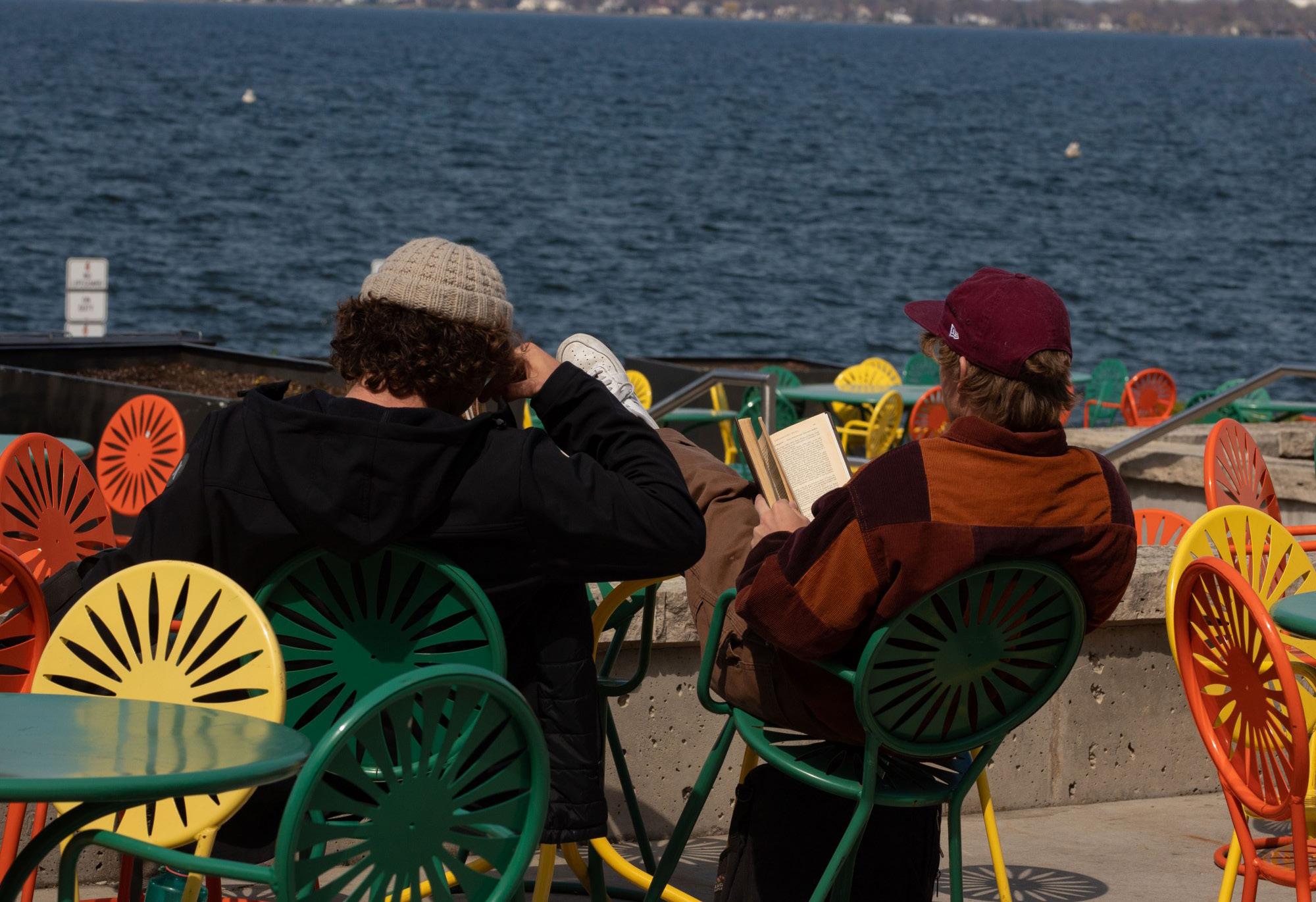

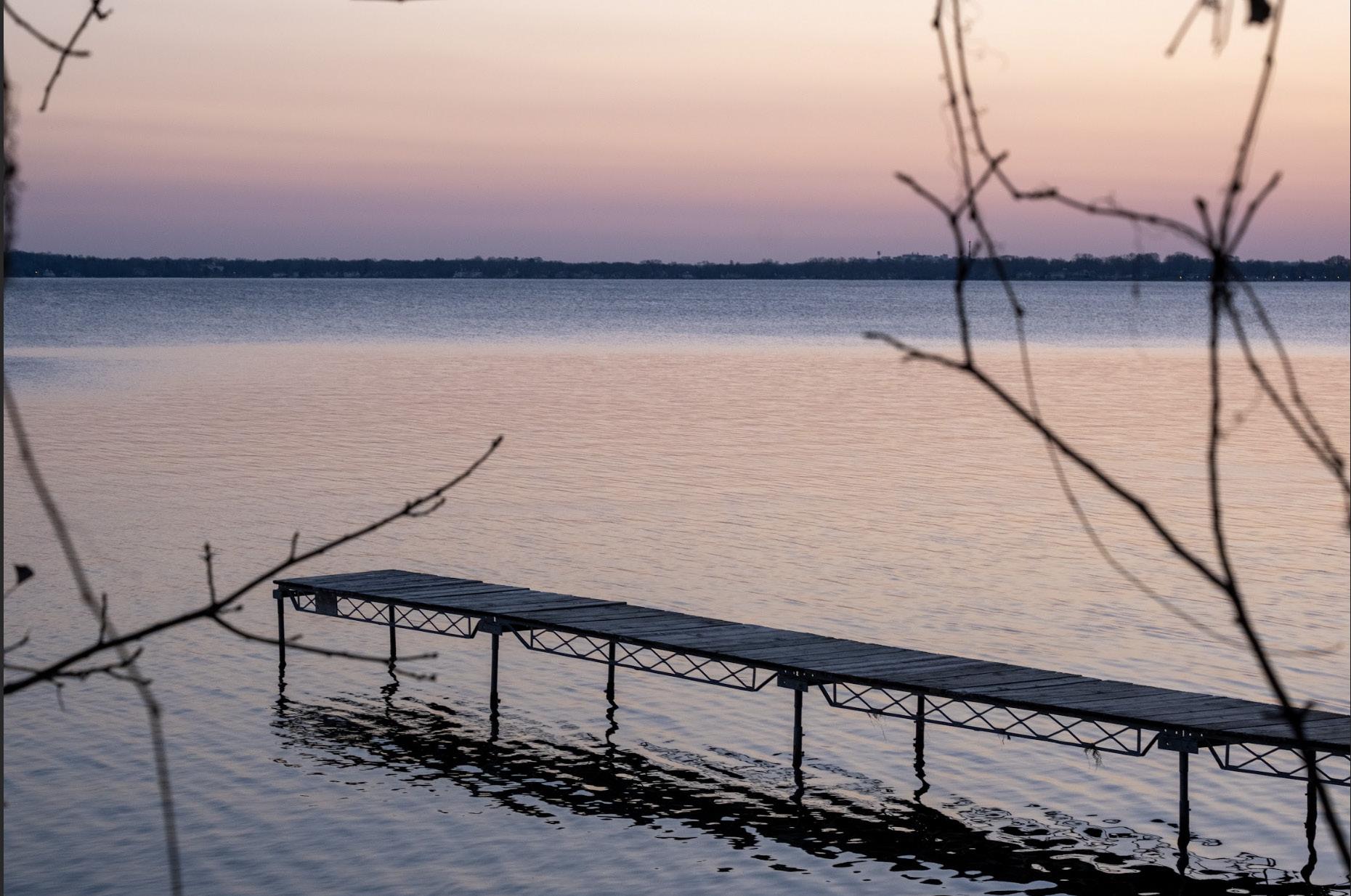


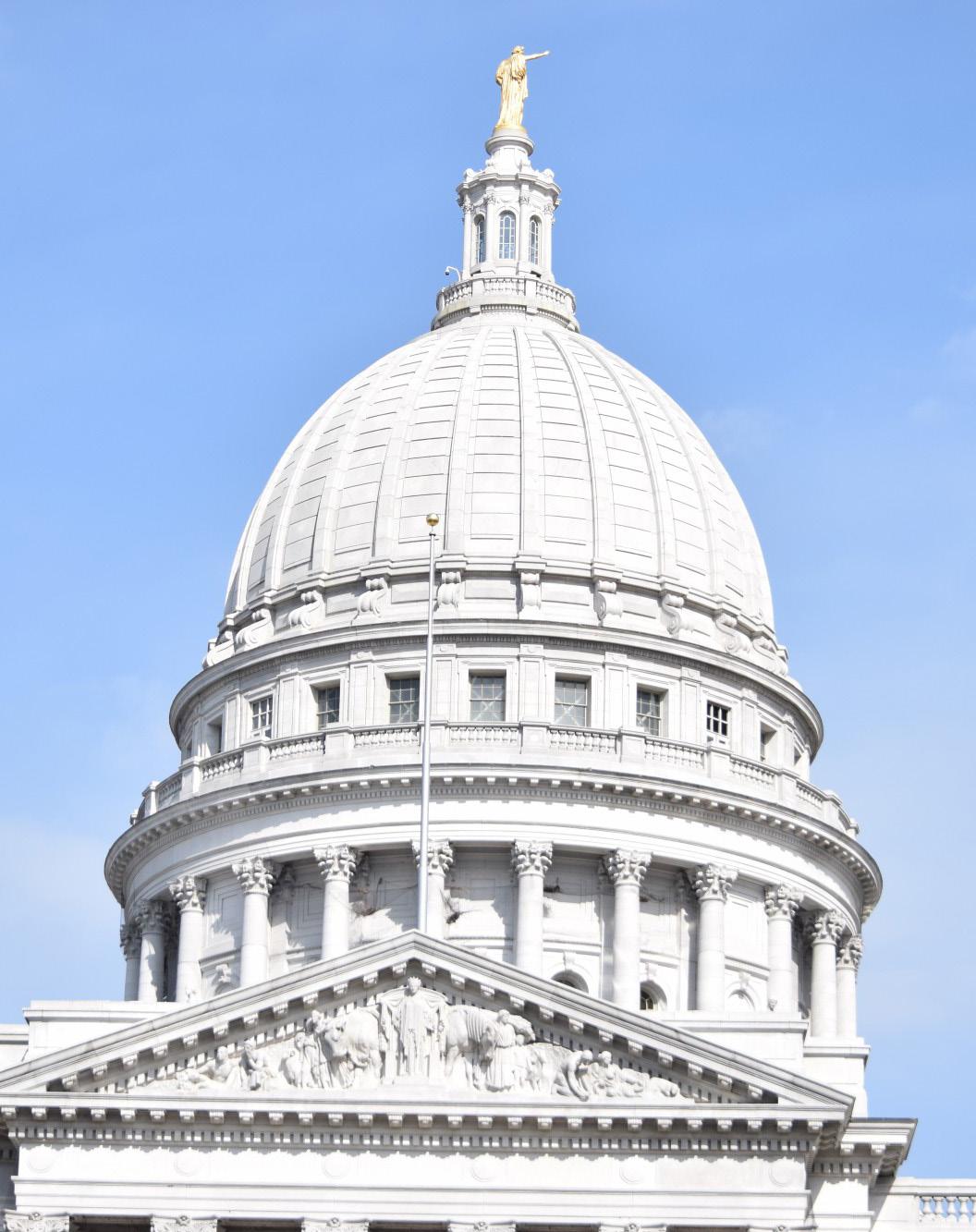
snapper’s row dailycardinal.com Thursday, April 27, 2023 l 15 Spring in Madison ALEXA COLEMAN/THE DAILY CARDINAL Students studying on the Terrace. MEGHAN SPIRITO/THE DAILY CARDINAL Iconic Terrace chairs are set out for the summer. LIAM BERAN/THE DAILY CARDINAL Sunrise over Lake Mendota. LIAM BERAN/THE DAILY CARDINAL View of Lake Mendota as trees begin to bloom. MEGHAN SPIRITO/THE DAILY CARDINAL Trees outside of Bascom Hall start to bloom flowers for the spring. MEGHAN SPIRITO/THE DAILY CARDINAL The Capitol on a sunny day.
April 27, 2023












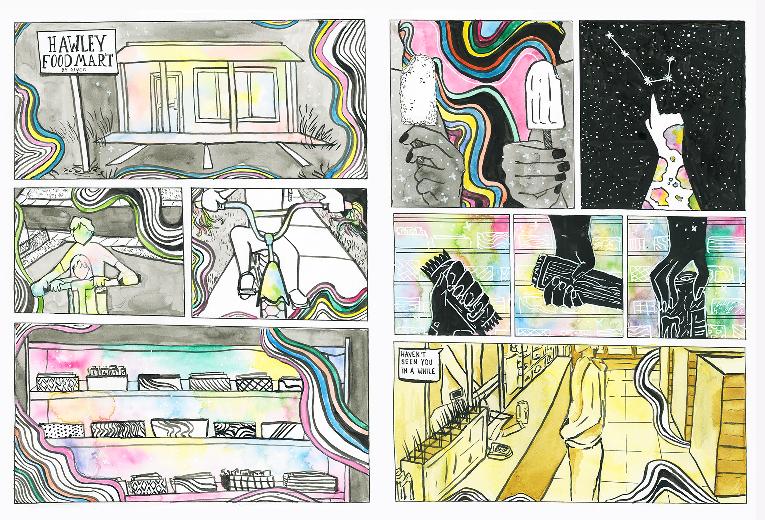
comics 16 •
dailycardinal.com
Thursday,
The Seasons as a UW Varsity Band Member by Hailey Johnson Hawley Foodmart by River Kratochvil
Dinoroscope by Tova Lindberg
Be Not Afraid by Ruby Lambert
Bascom Buddies by Henry A. Moore
Trying To Stay Informed by Jeffrey Brown Companion by Jennifer Schaller
Mental Health Matters by Shayna Kaplan








 By Sydney Steidl STAFF WRITER
By Sydney Steidl STAFF WRITER













 Steven Zhao UW-Robotics
Steven Zhao UW-Robotics







 By Ian Wilder STAFF WRITER
By Ian Wilder STAFF WRITER






















